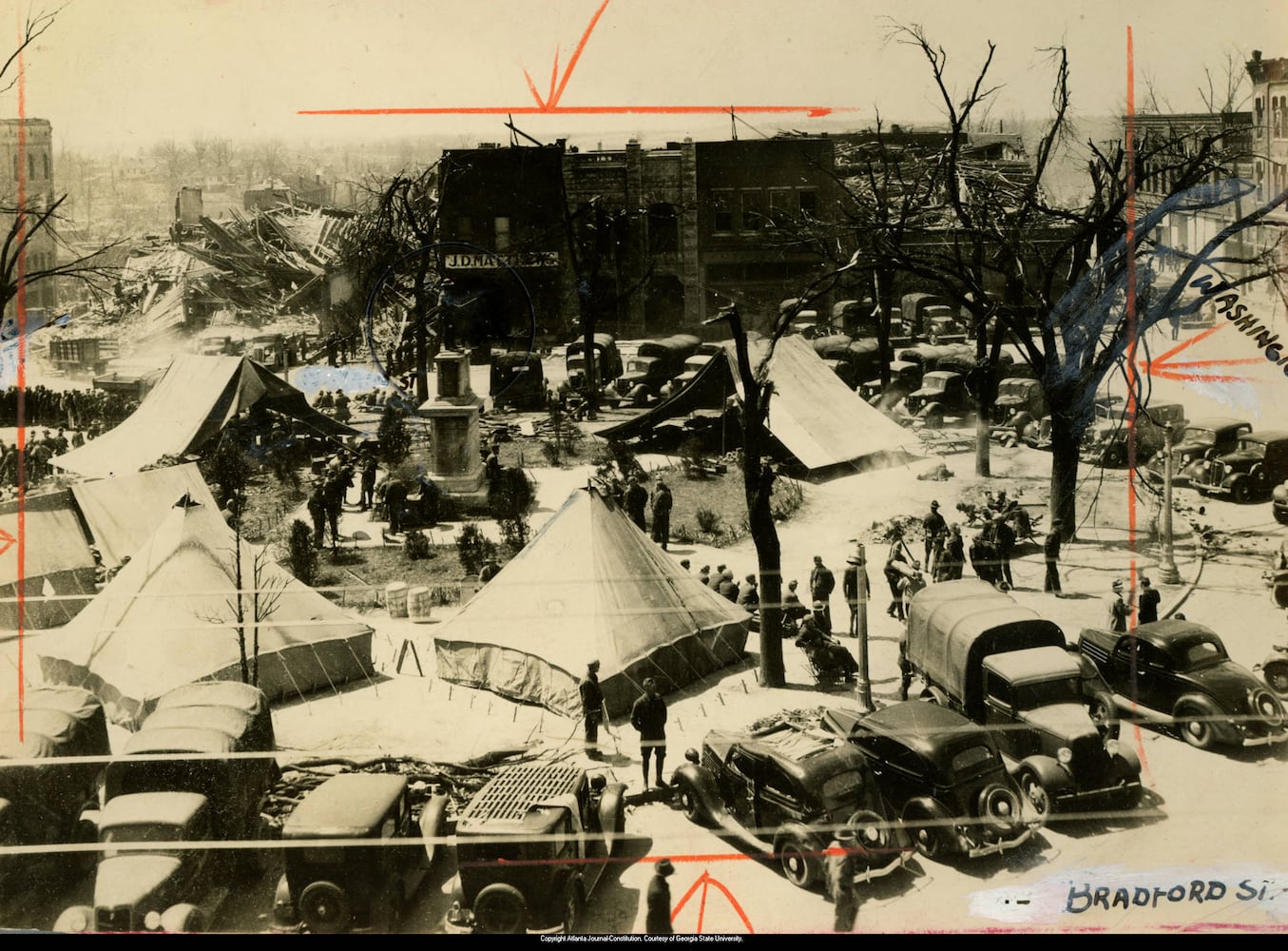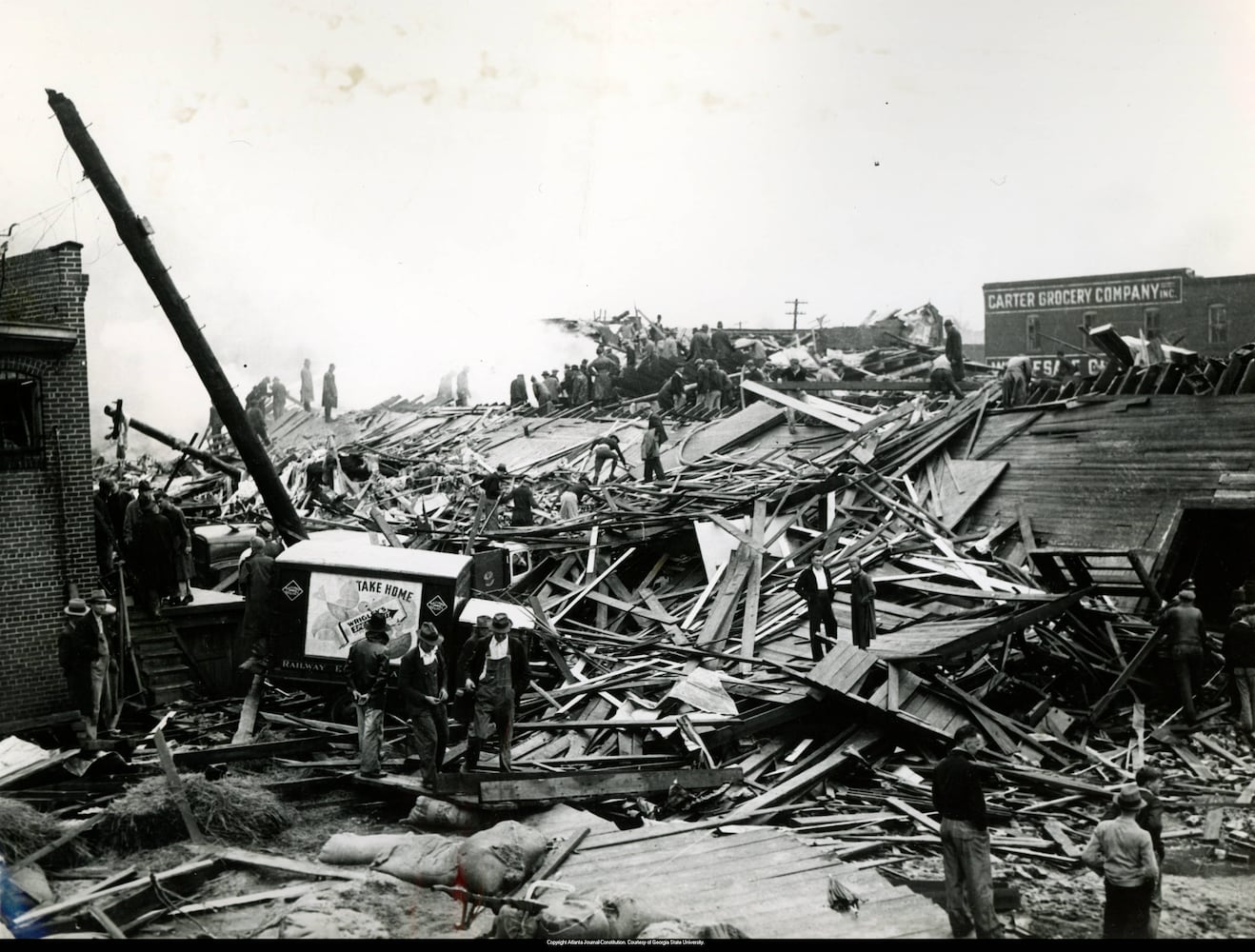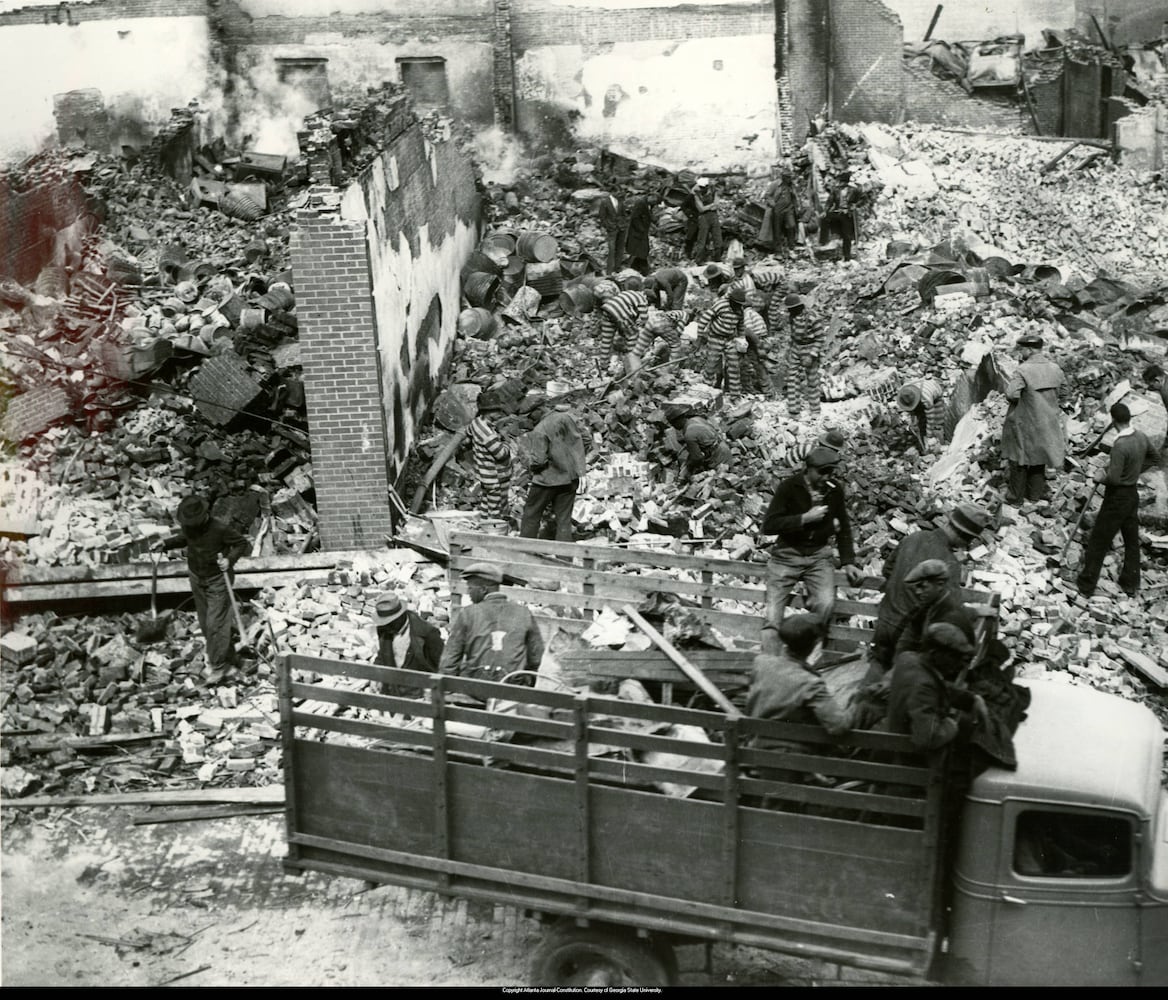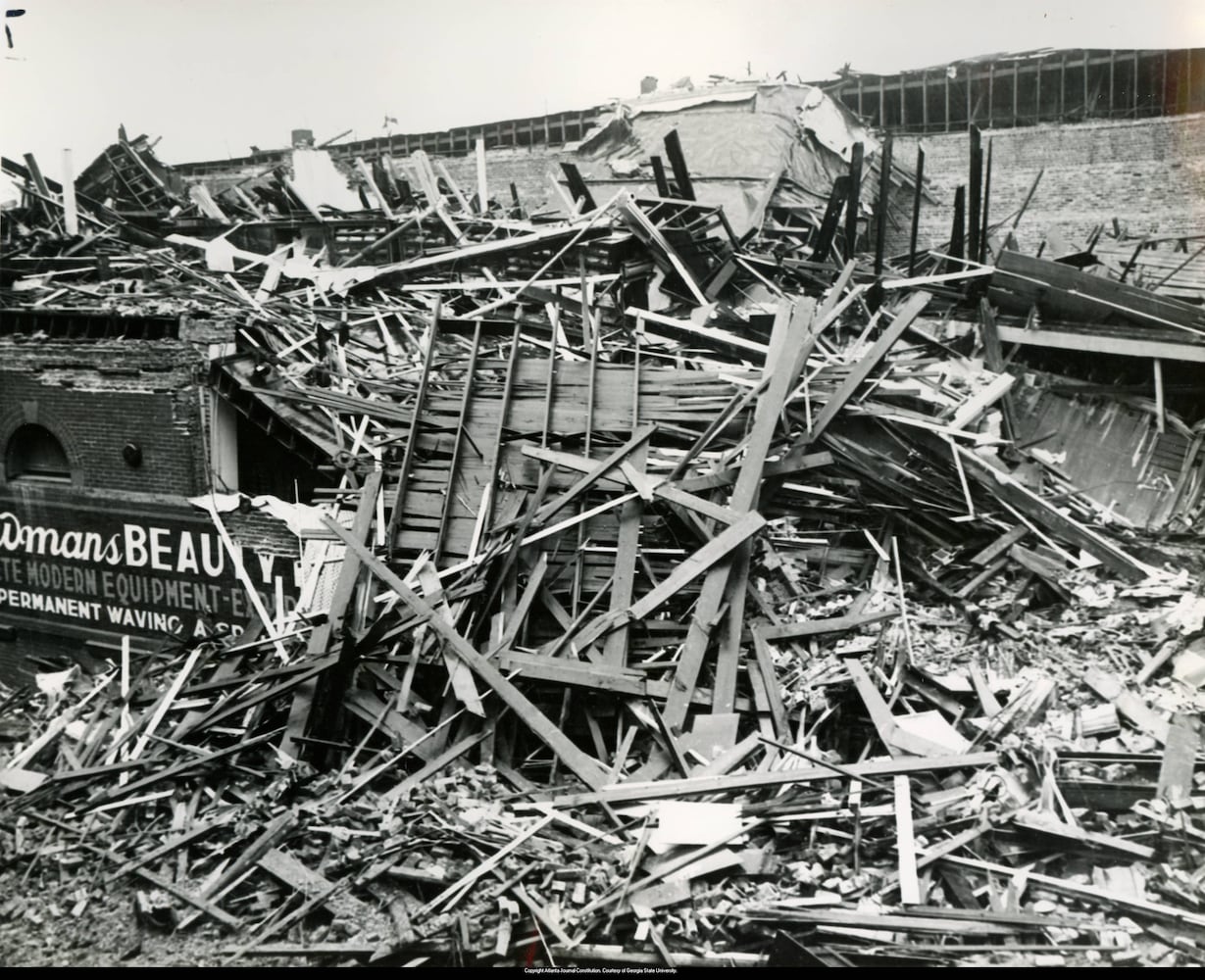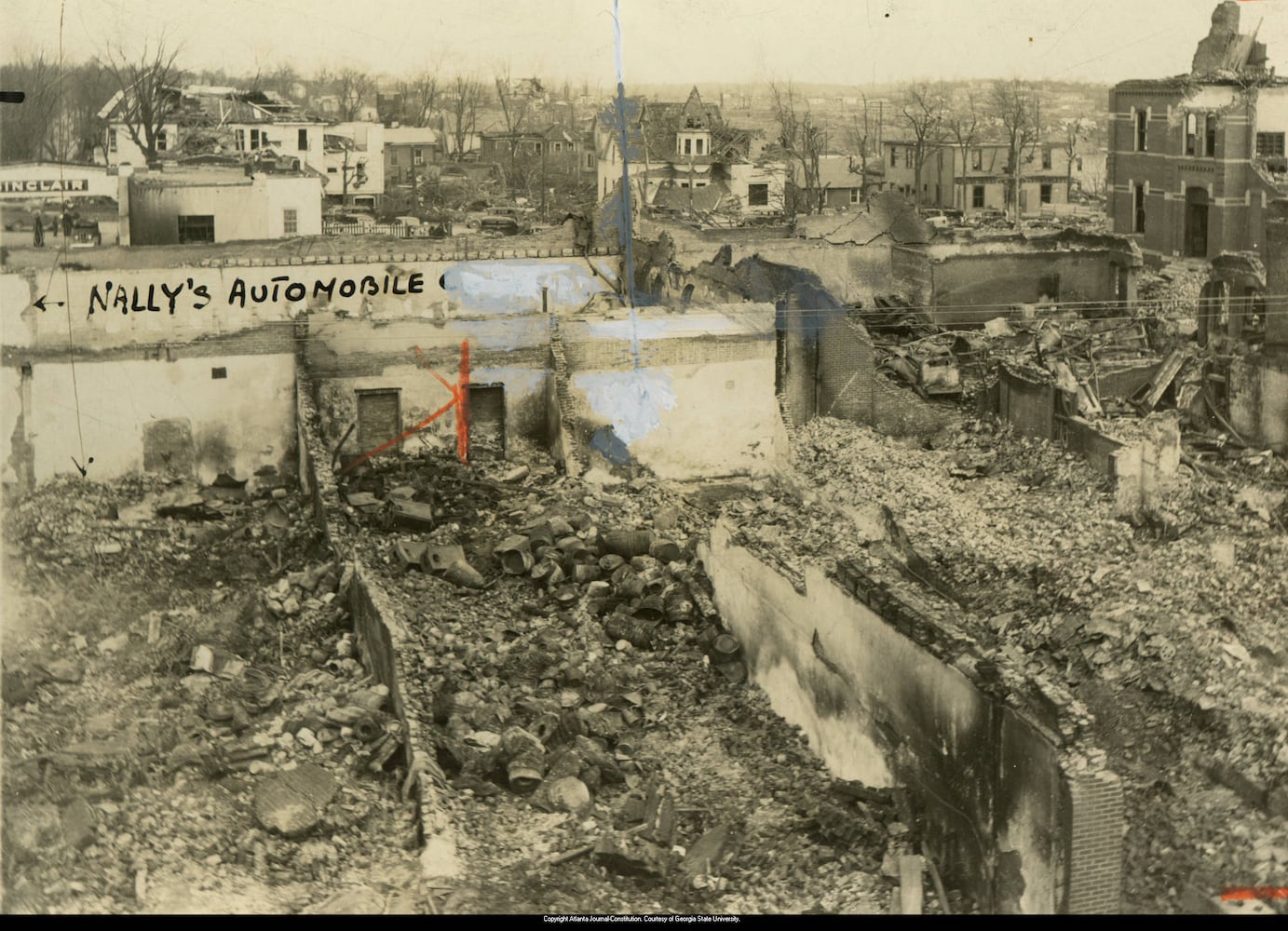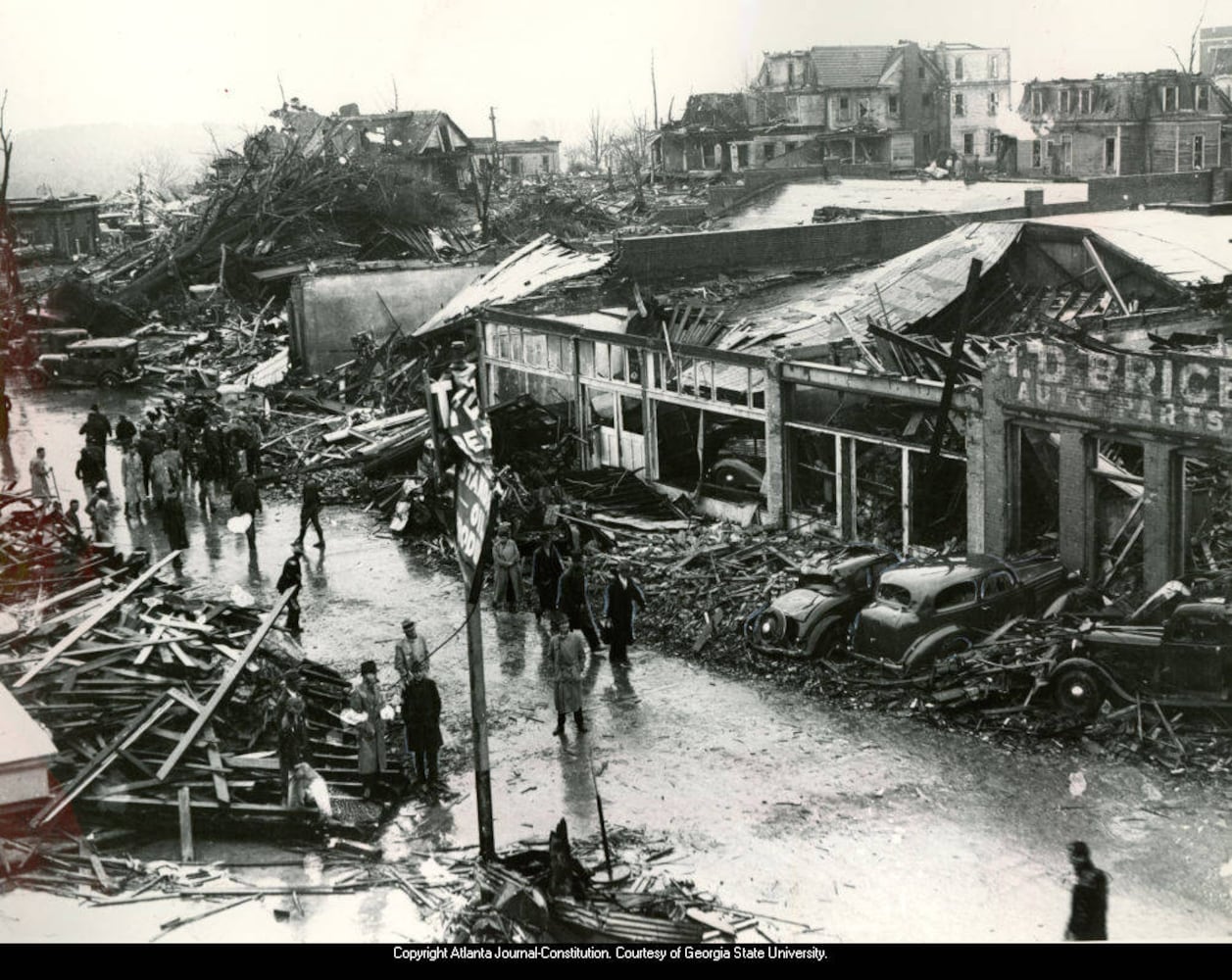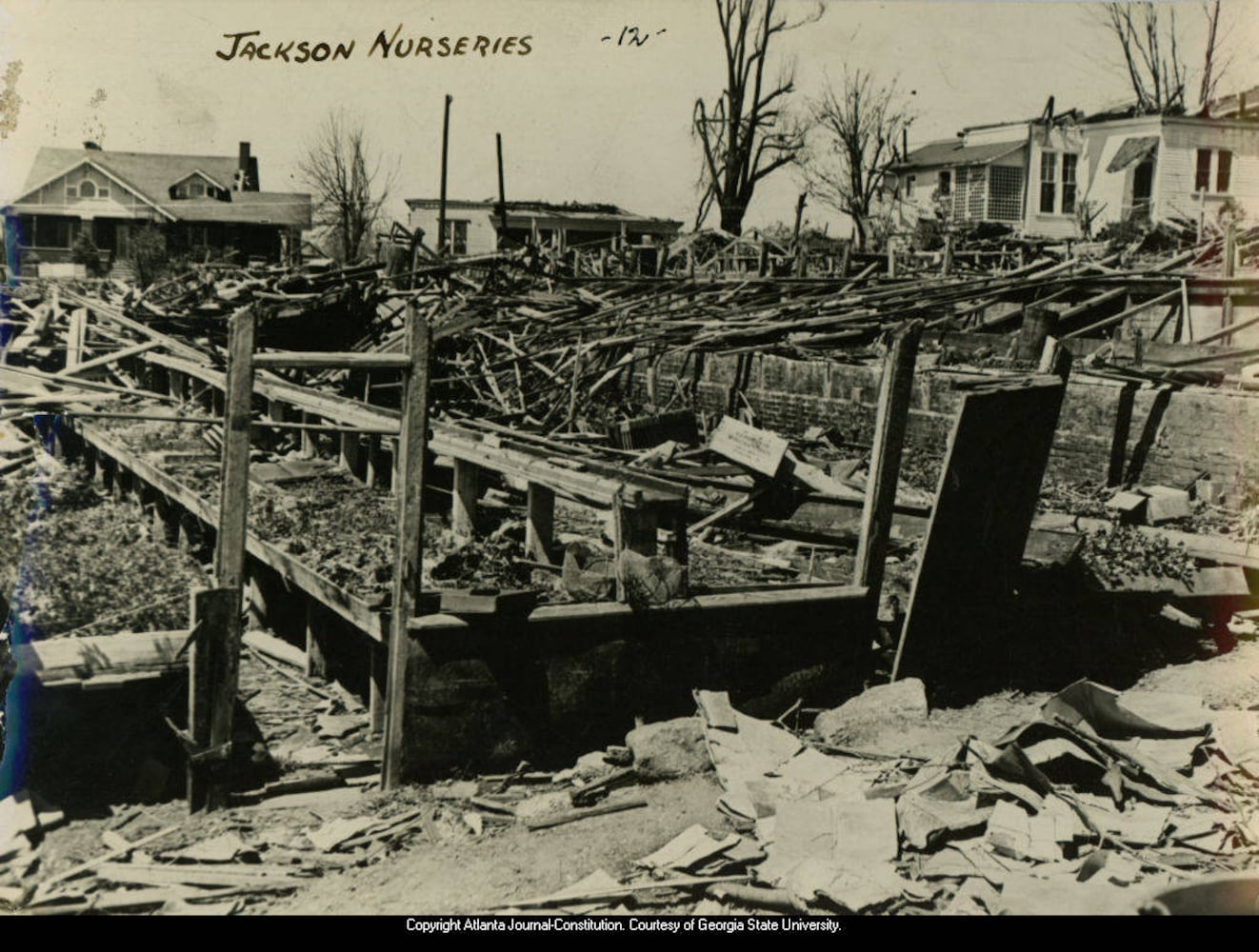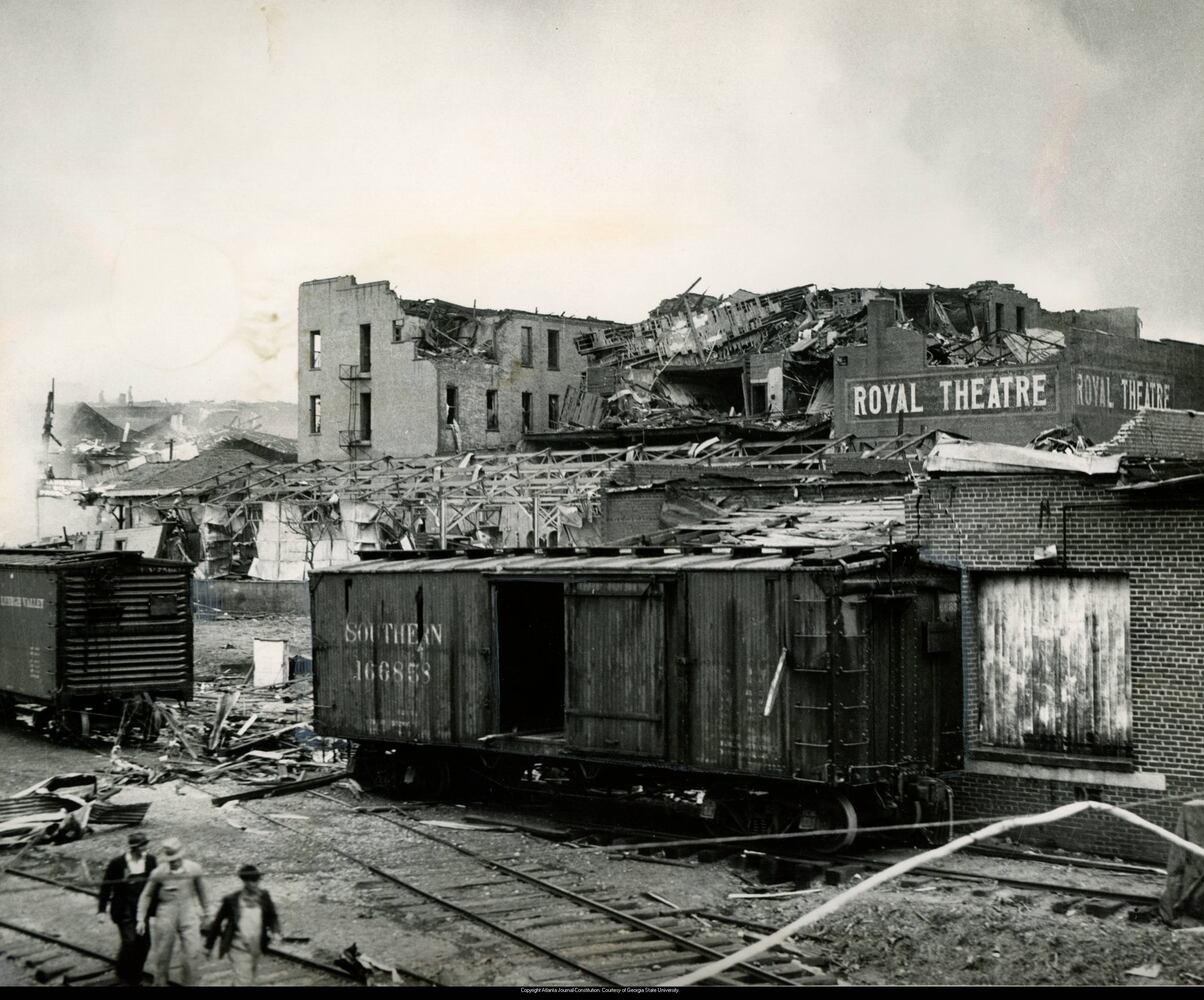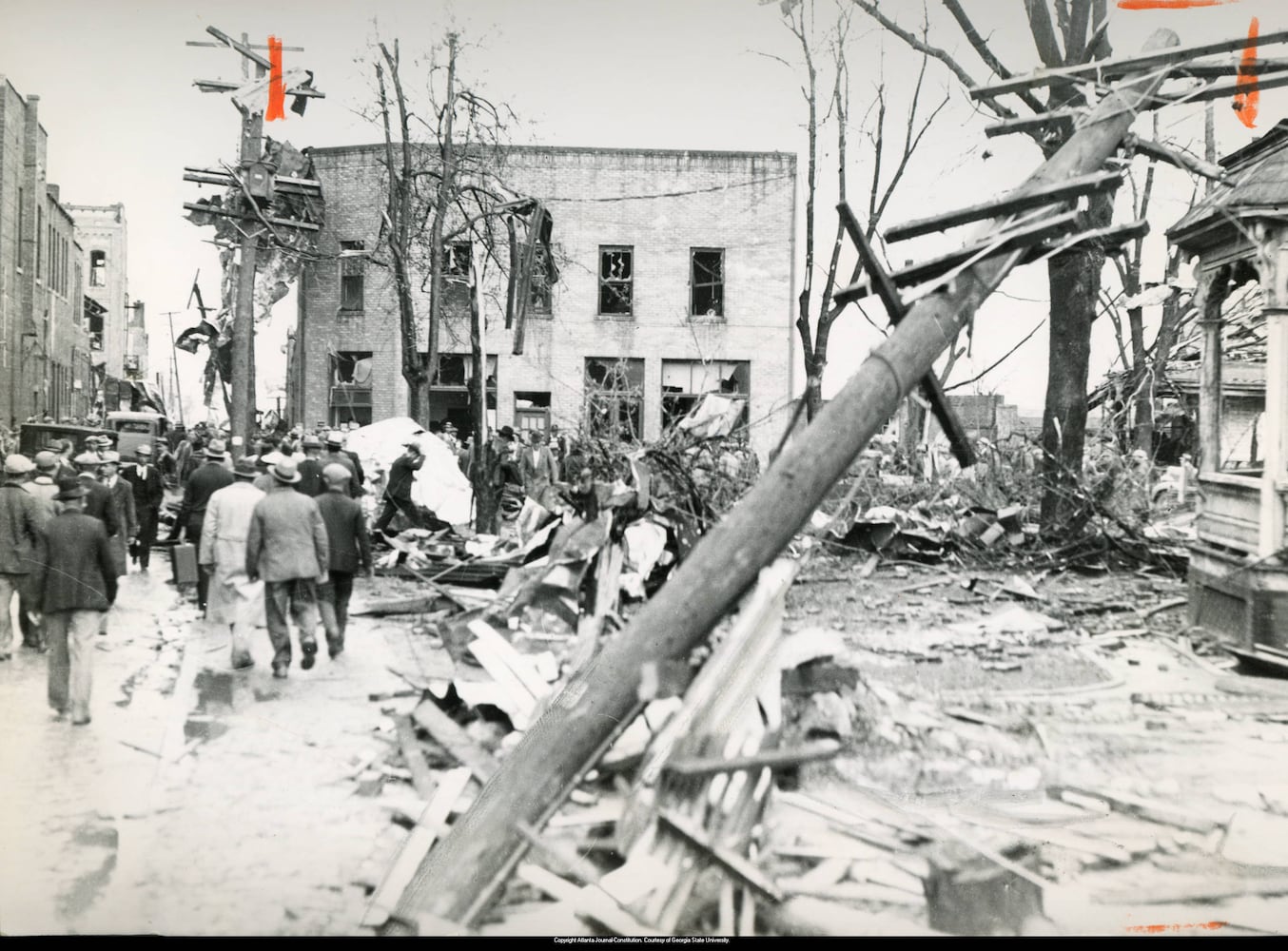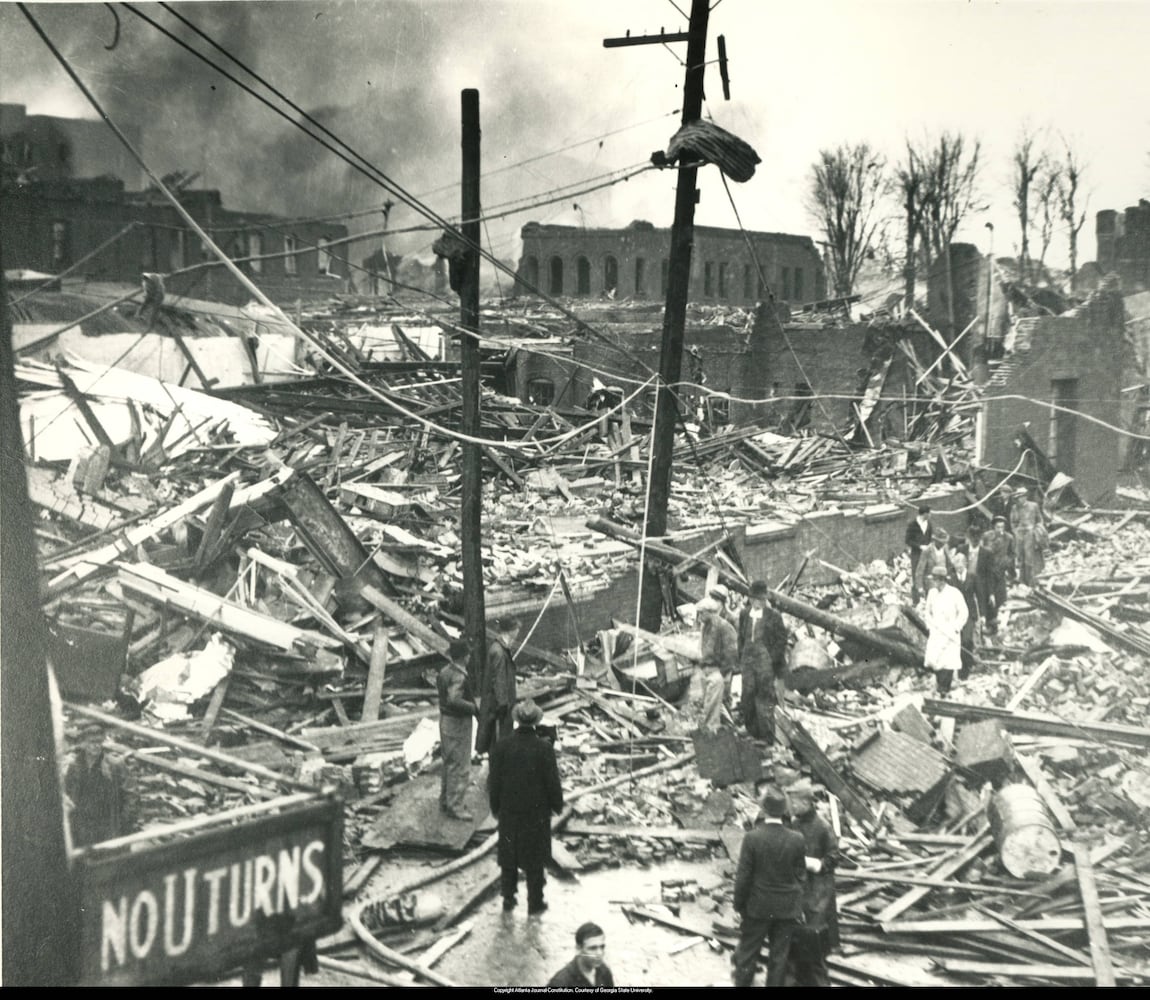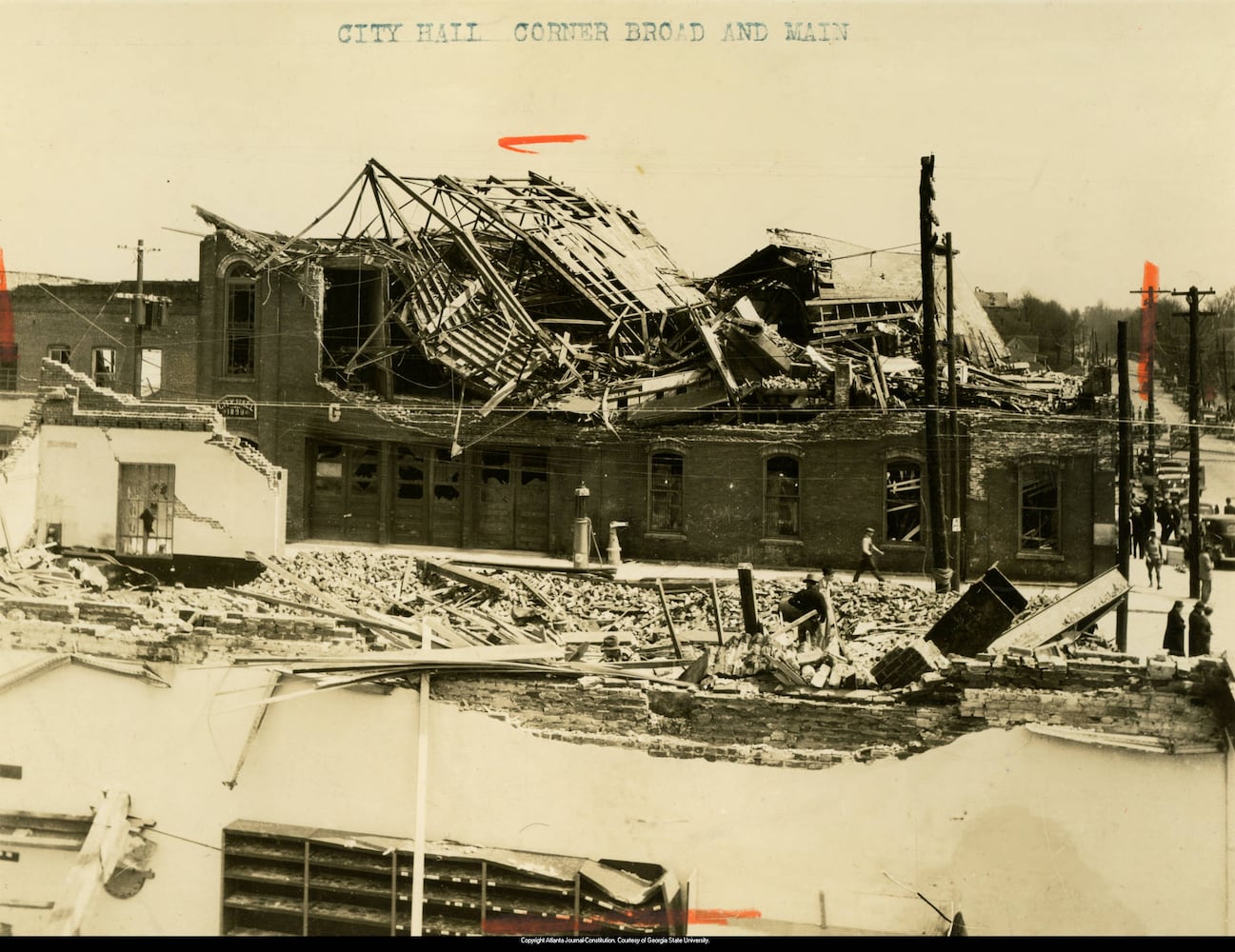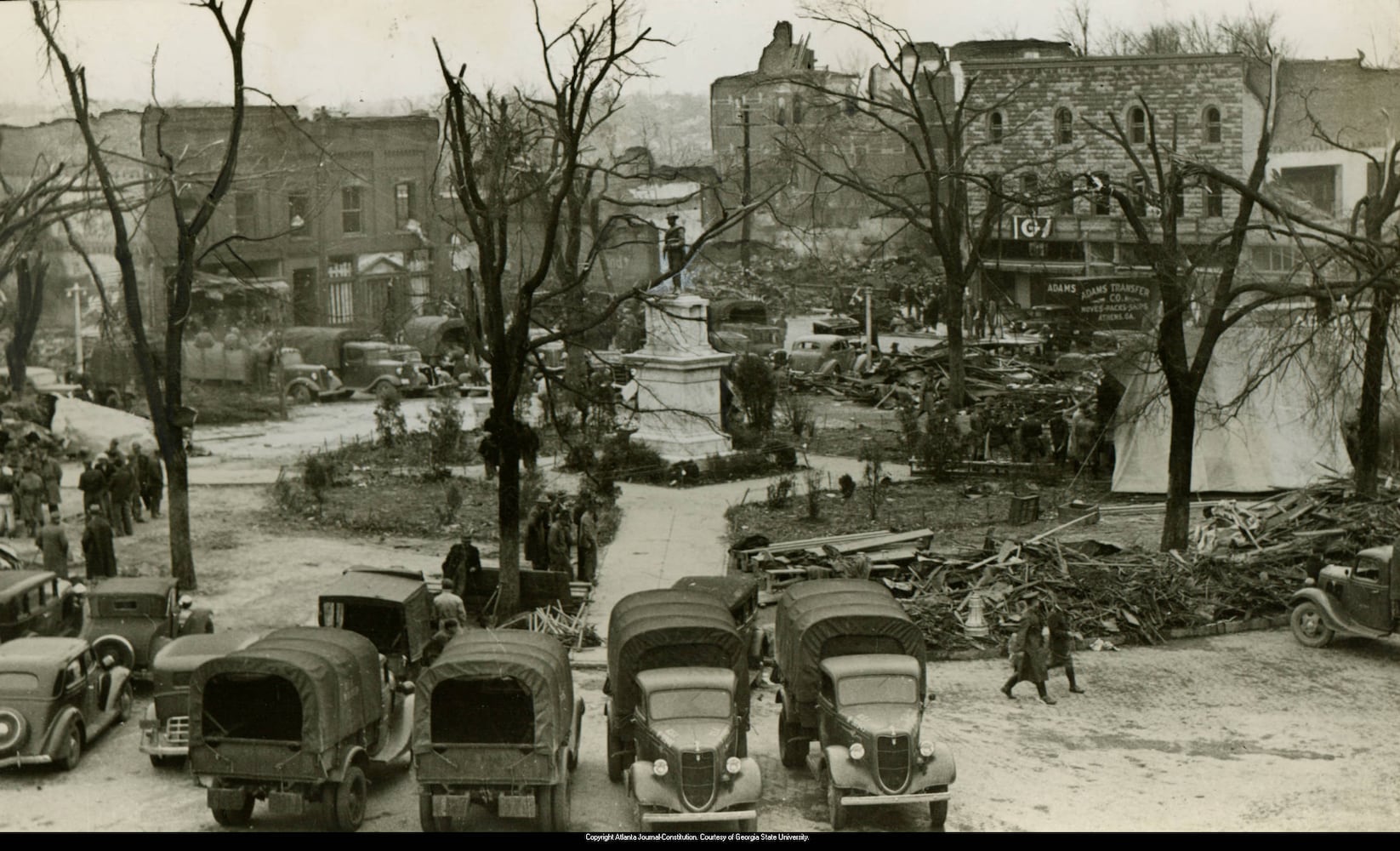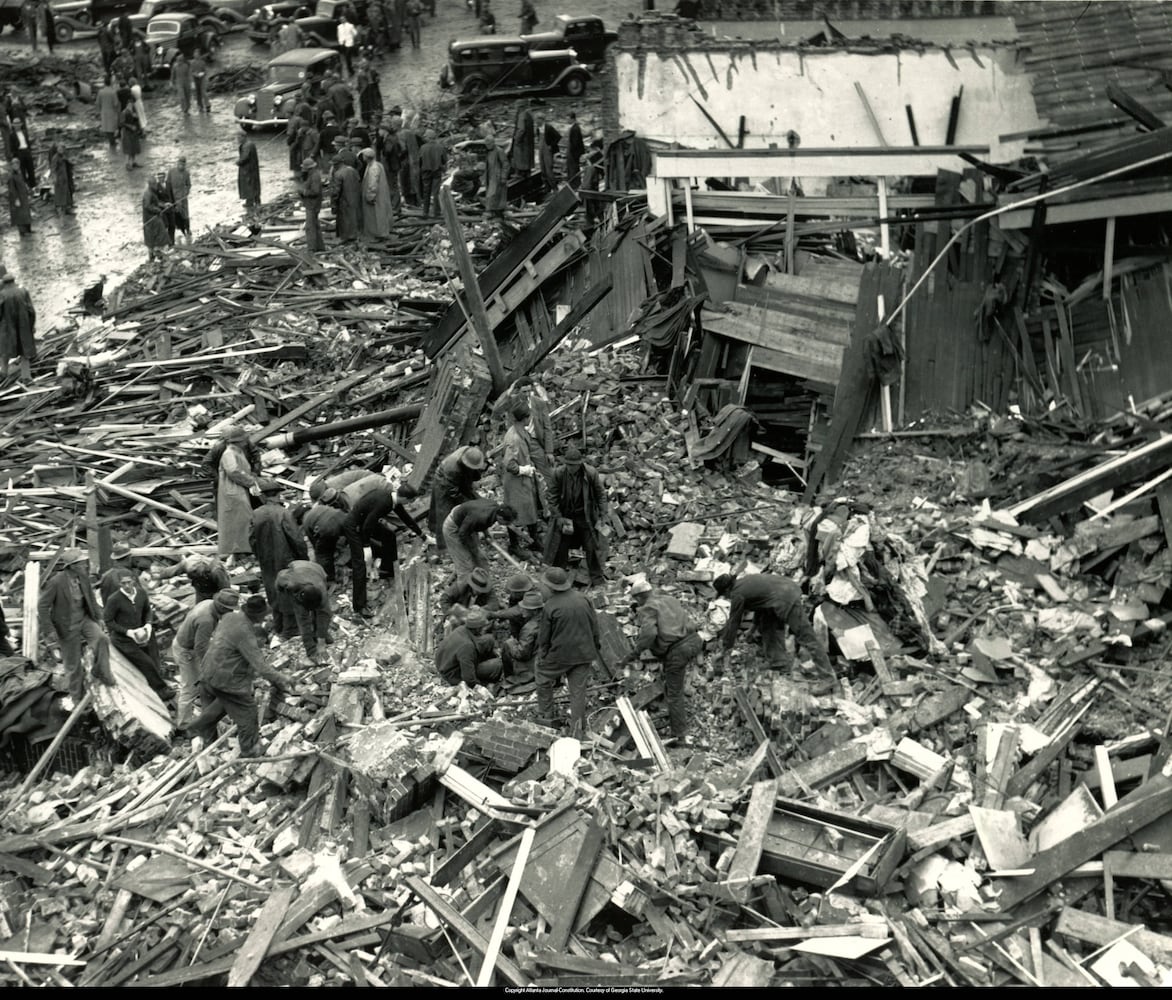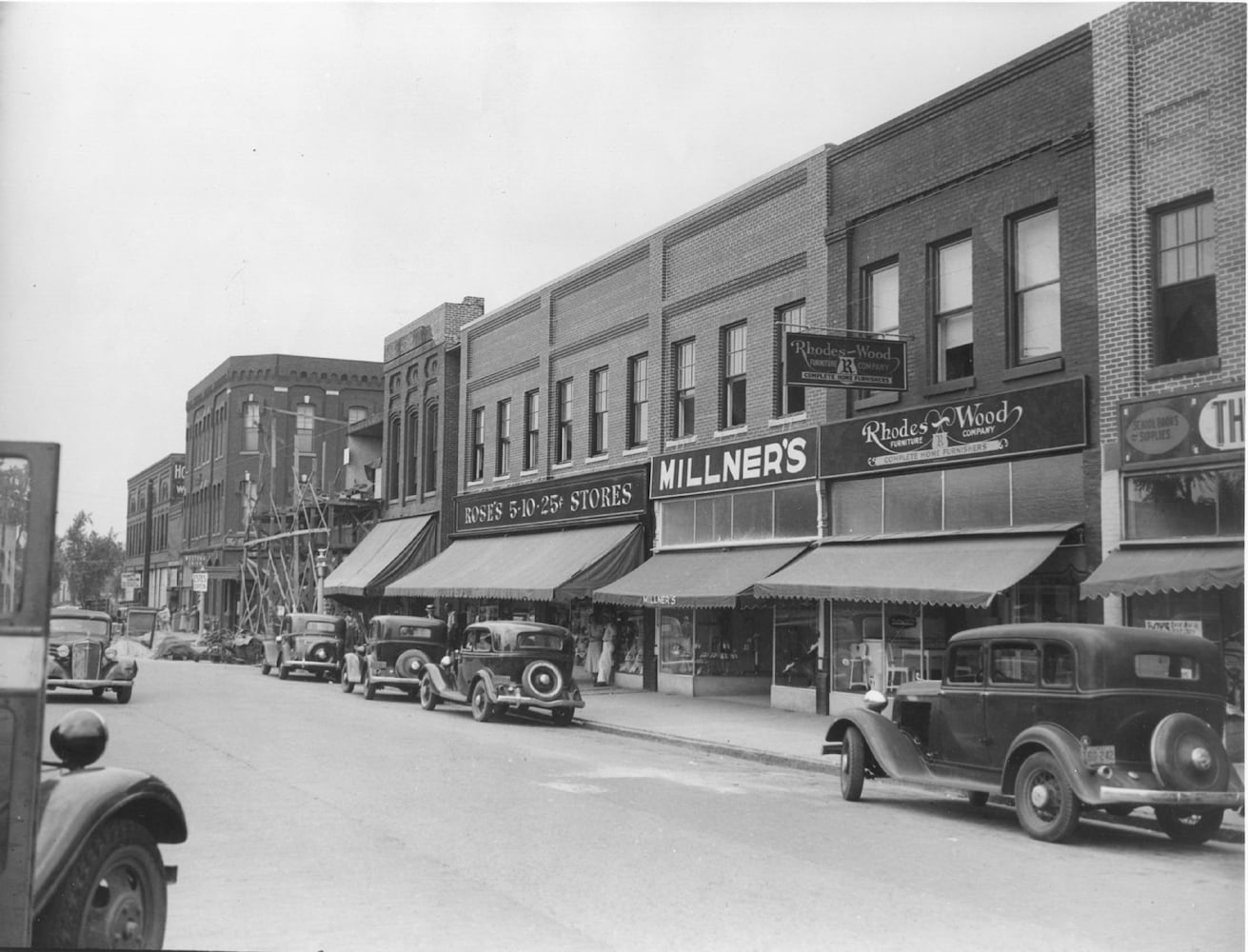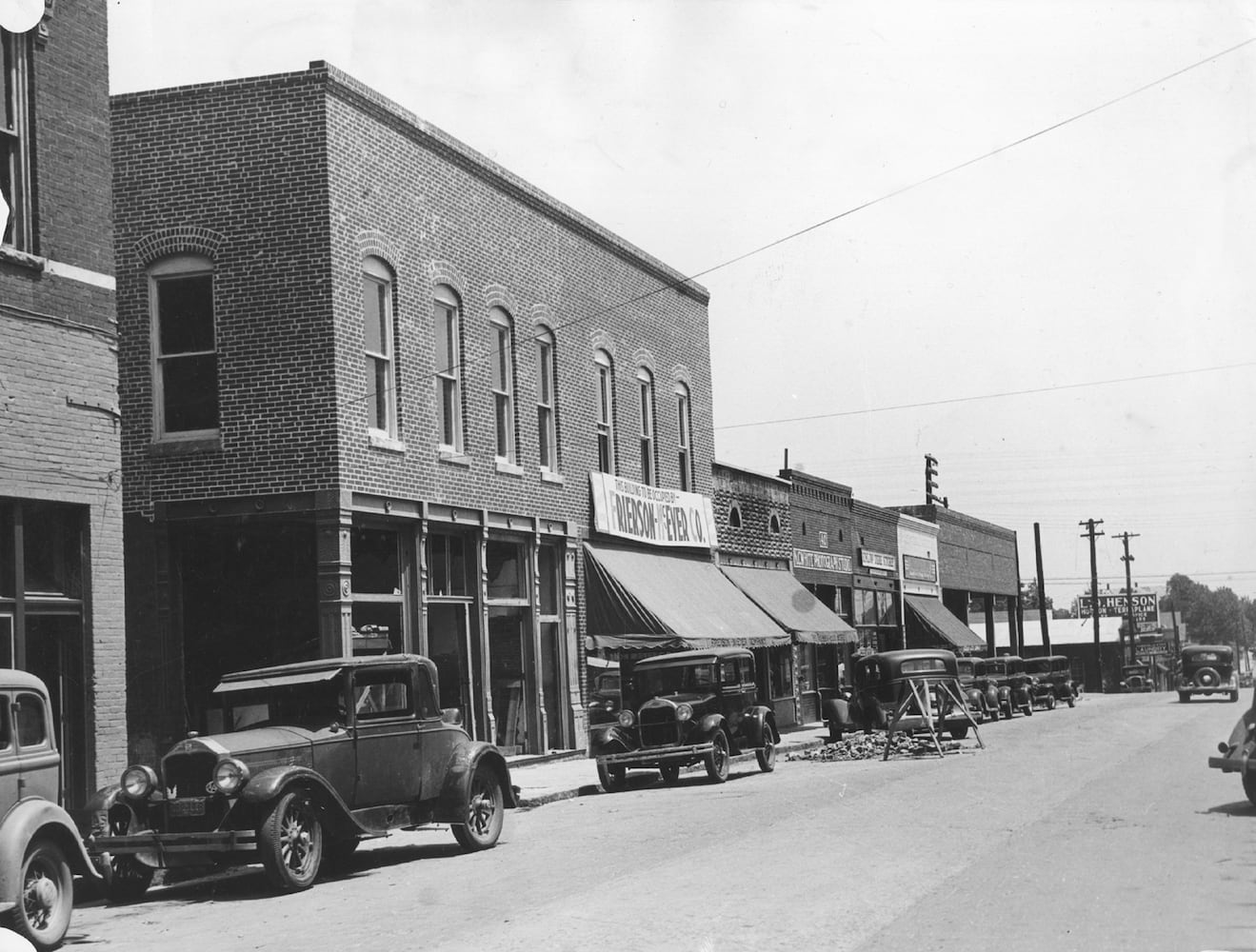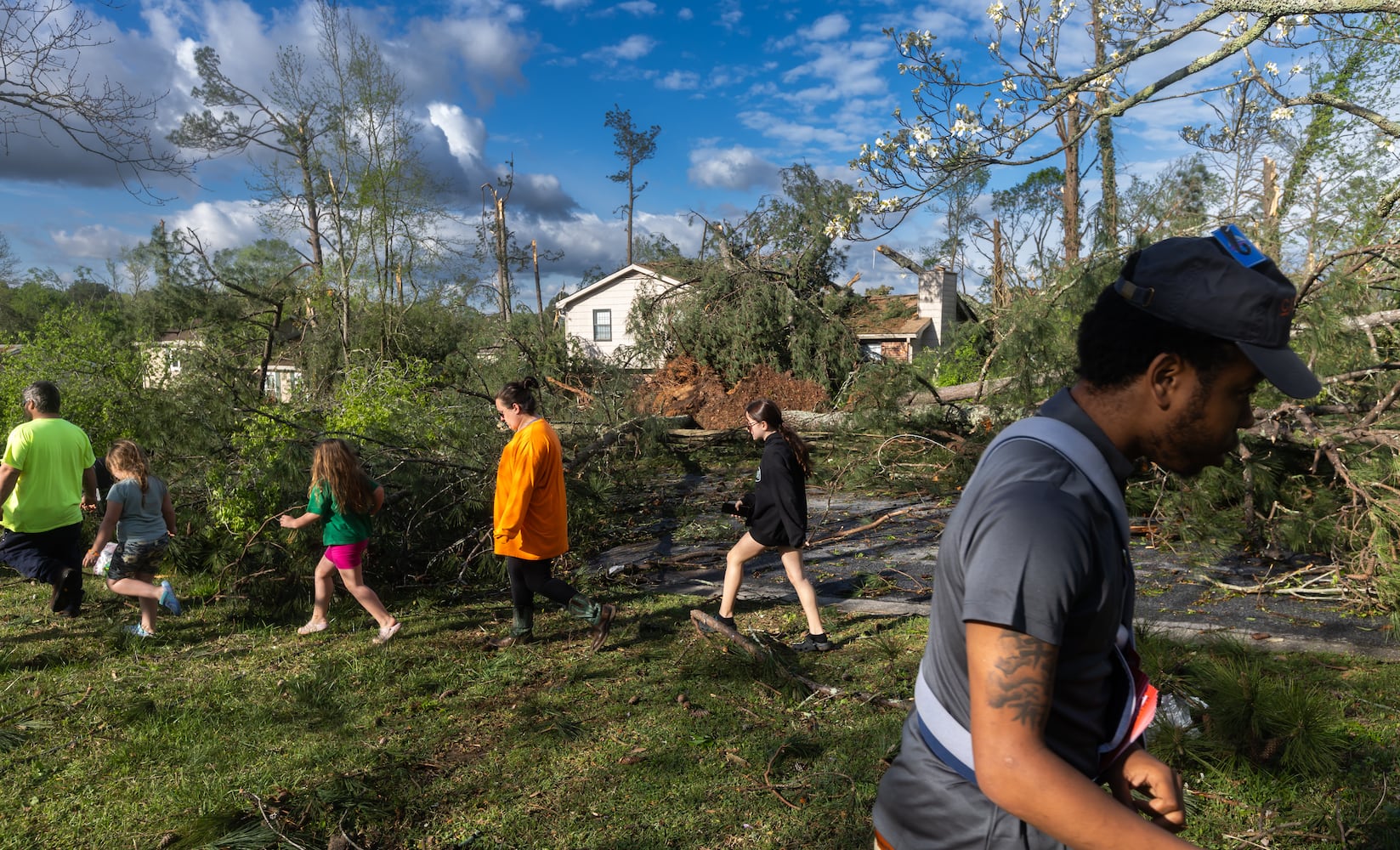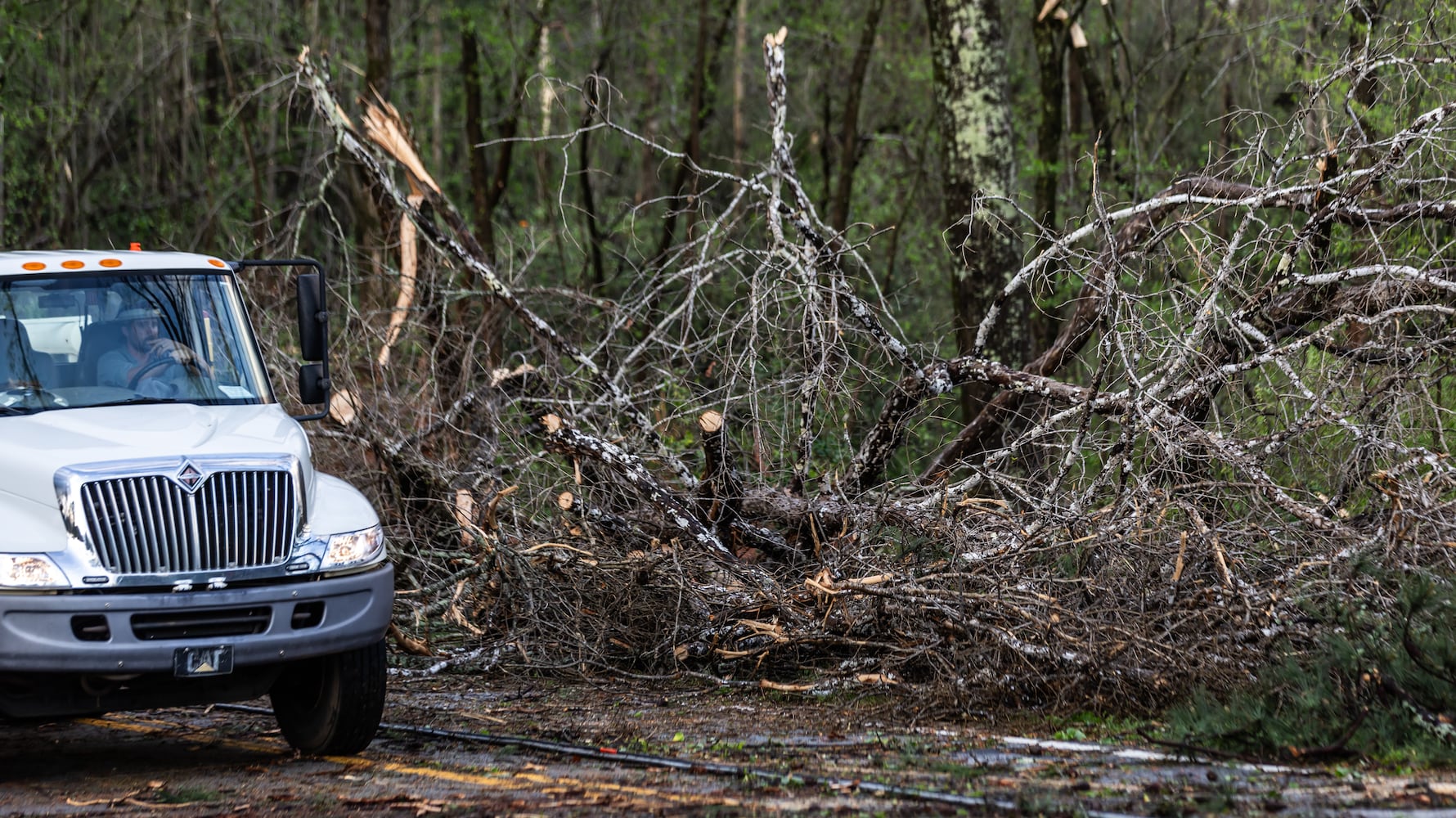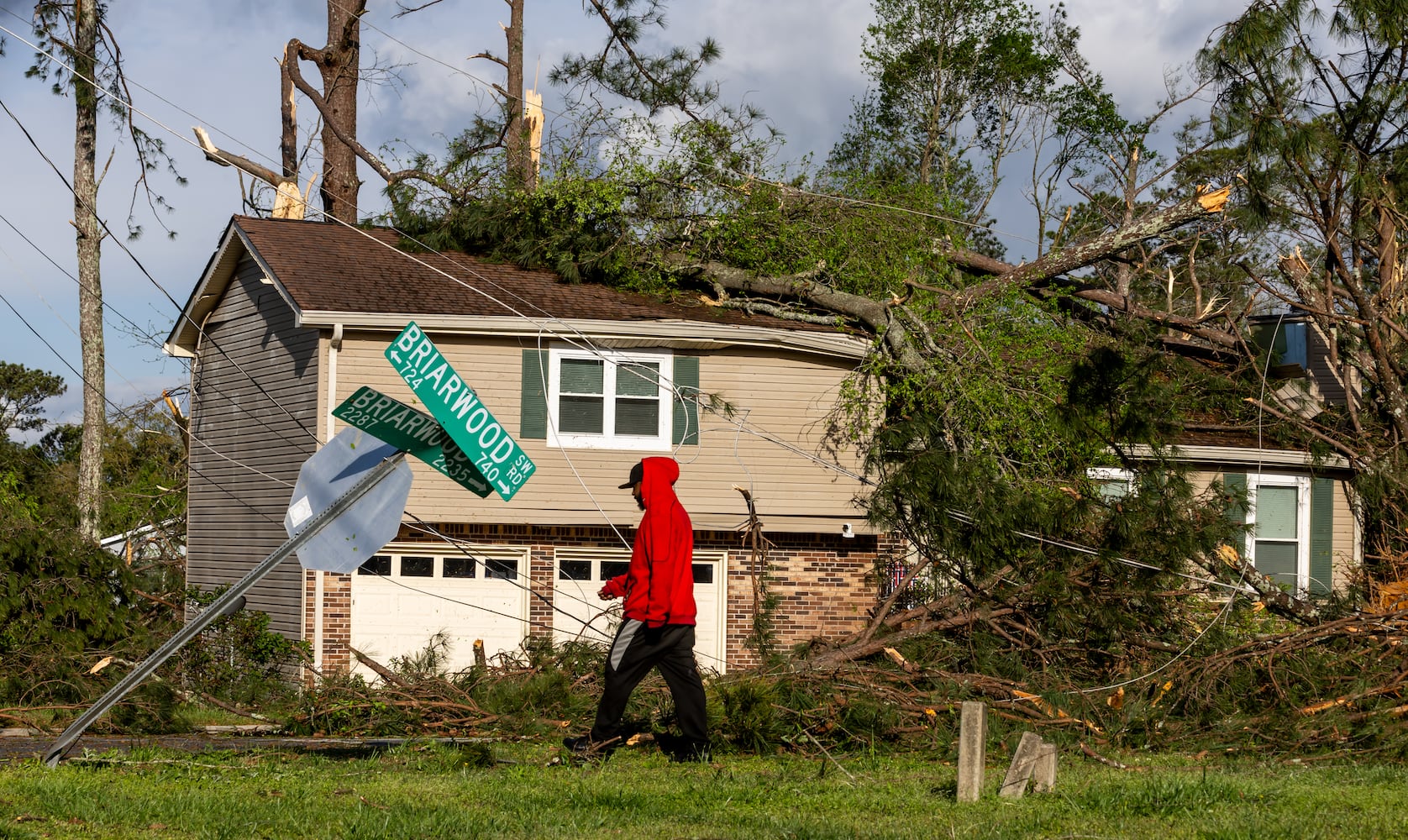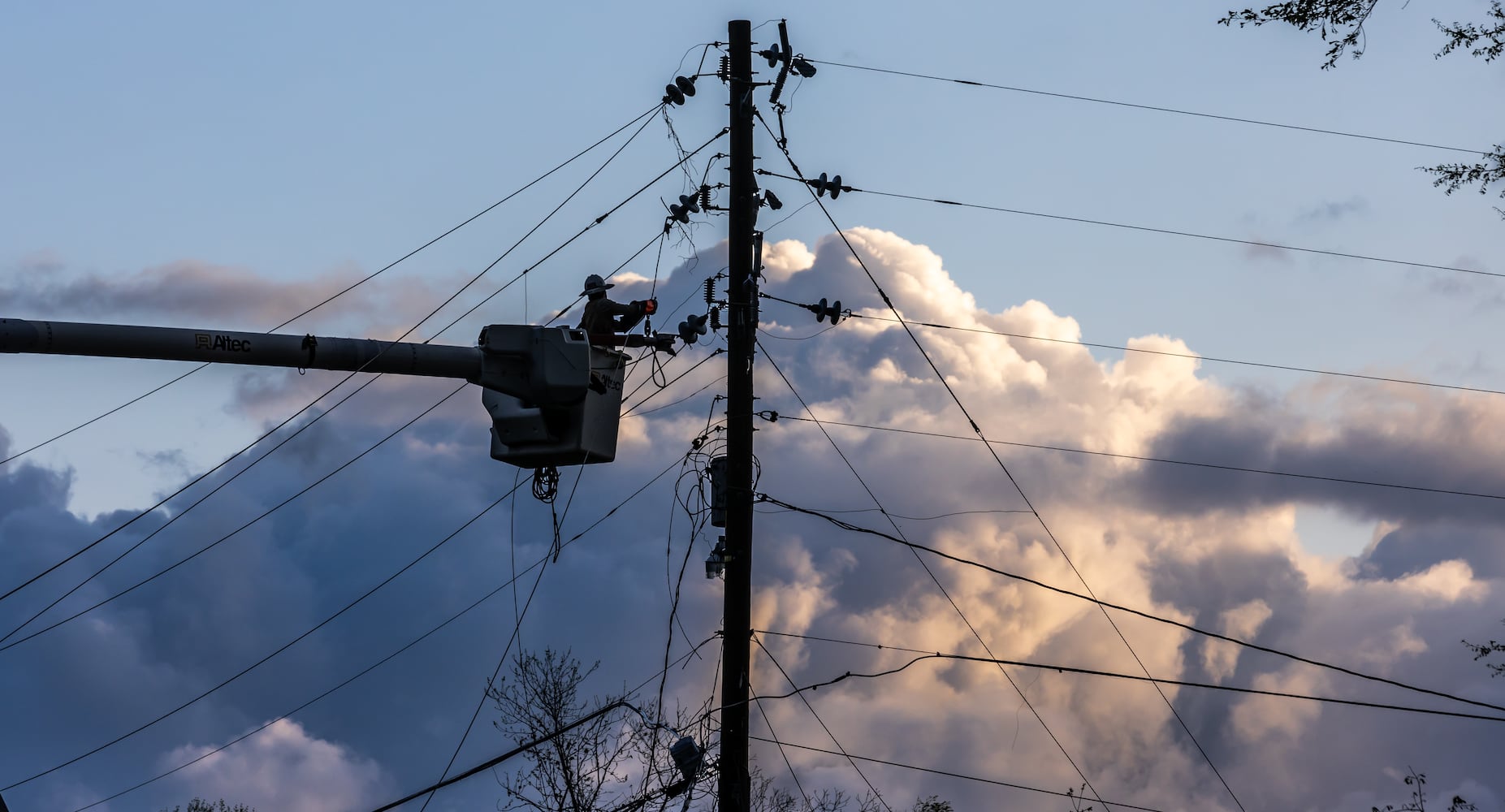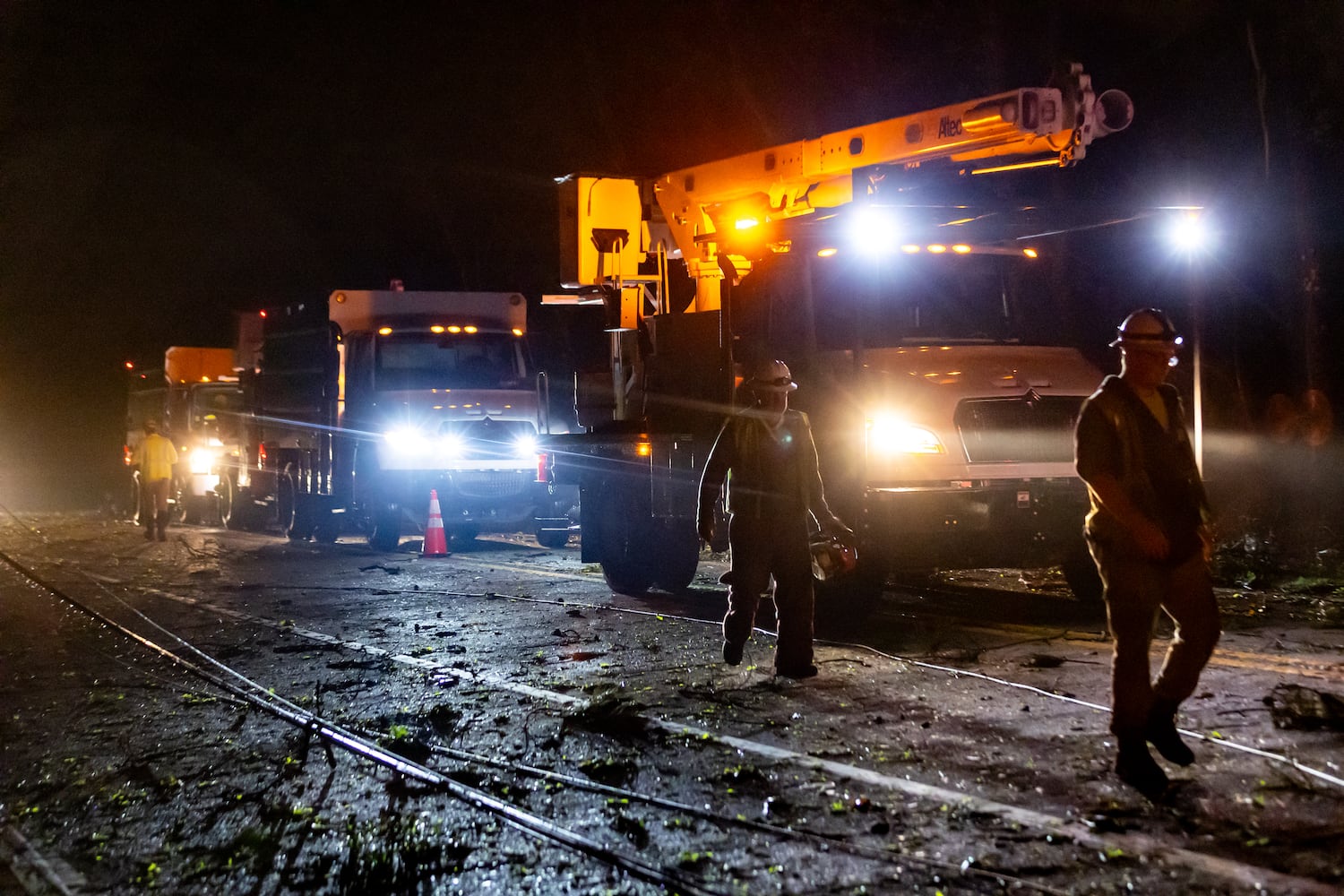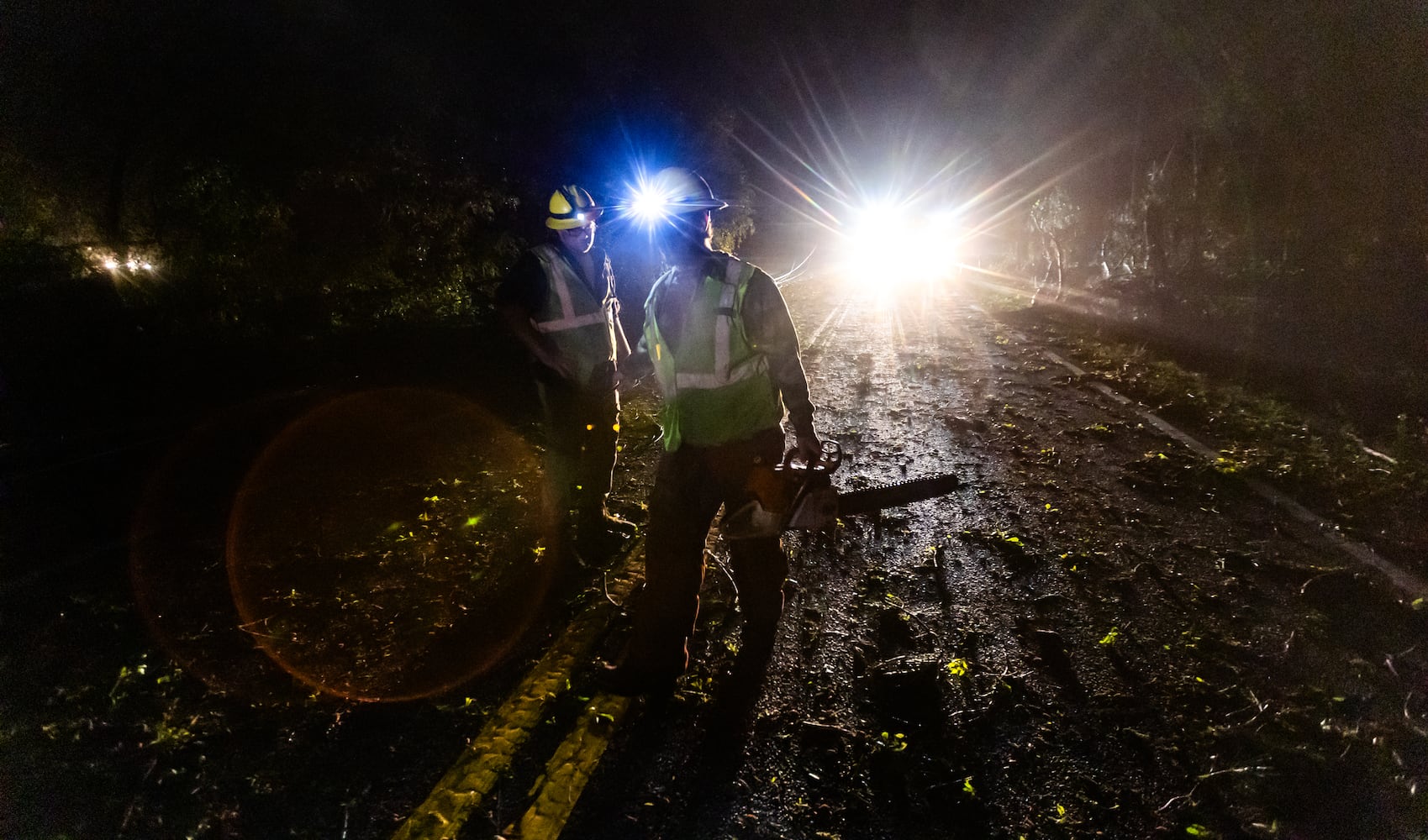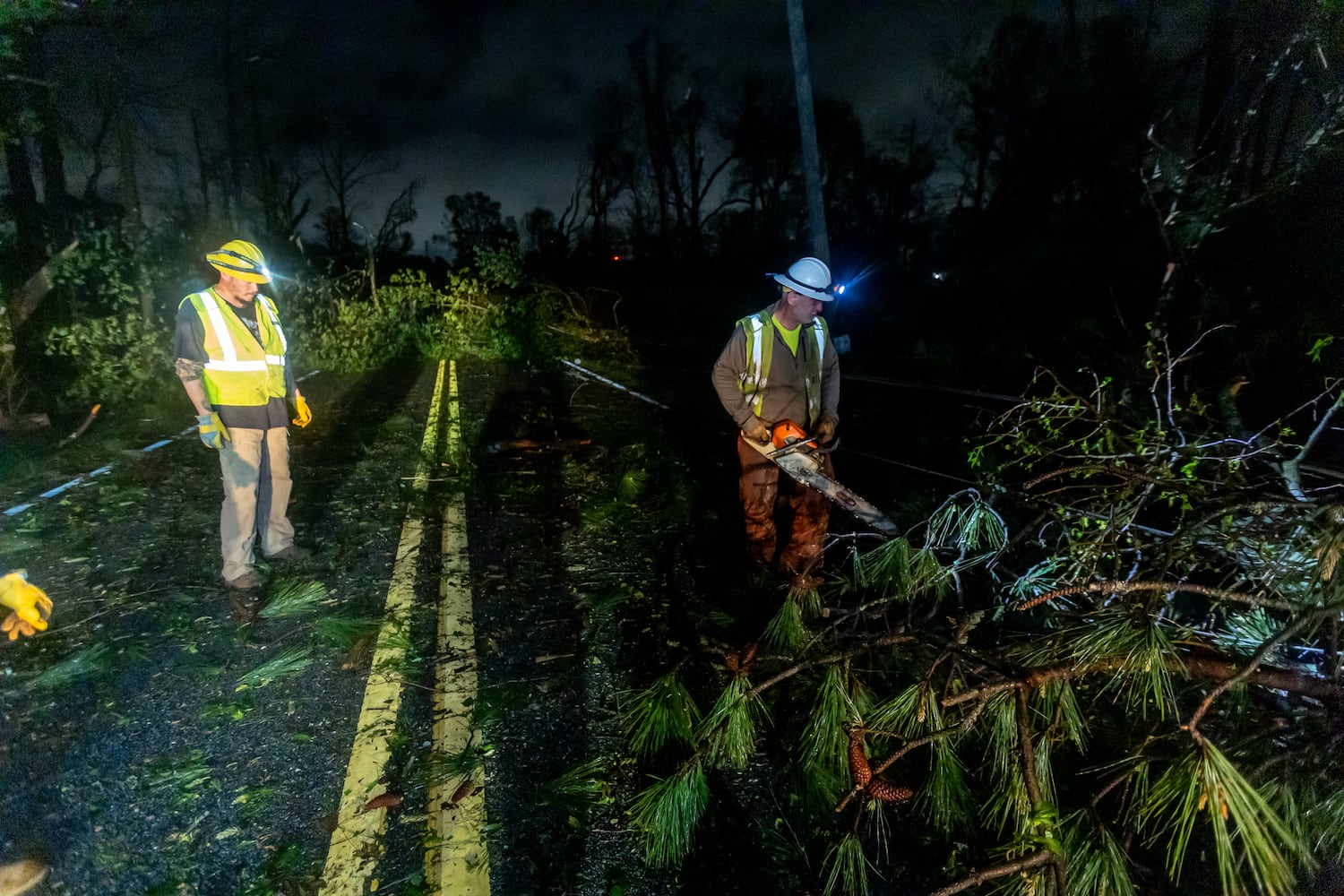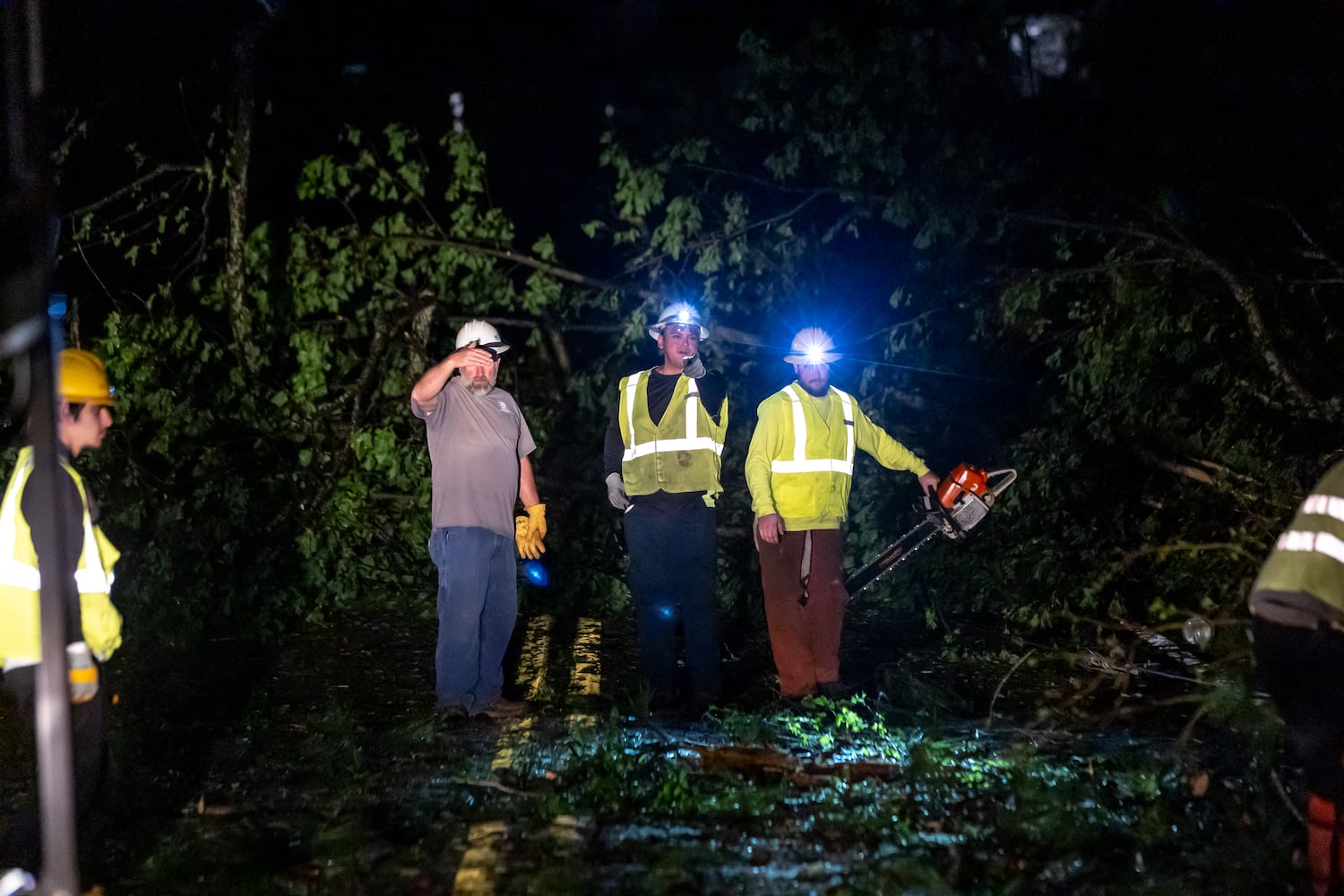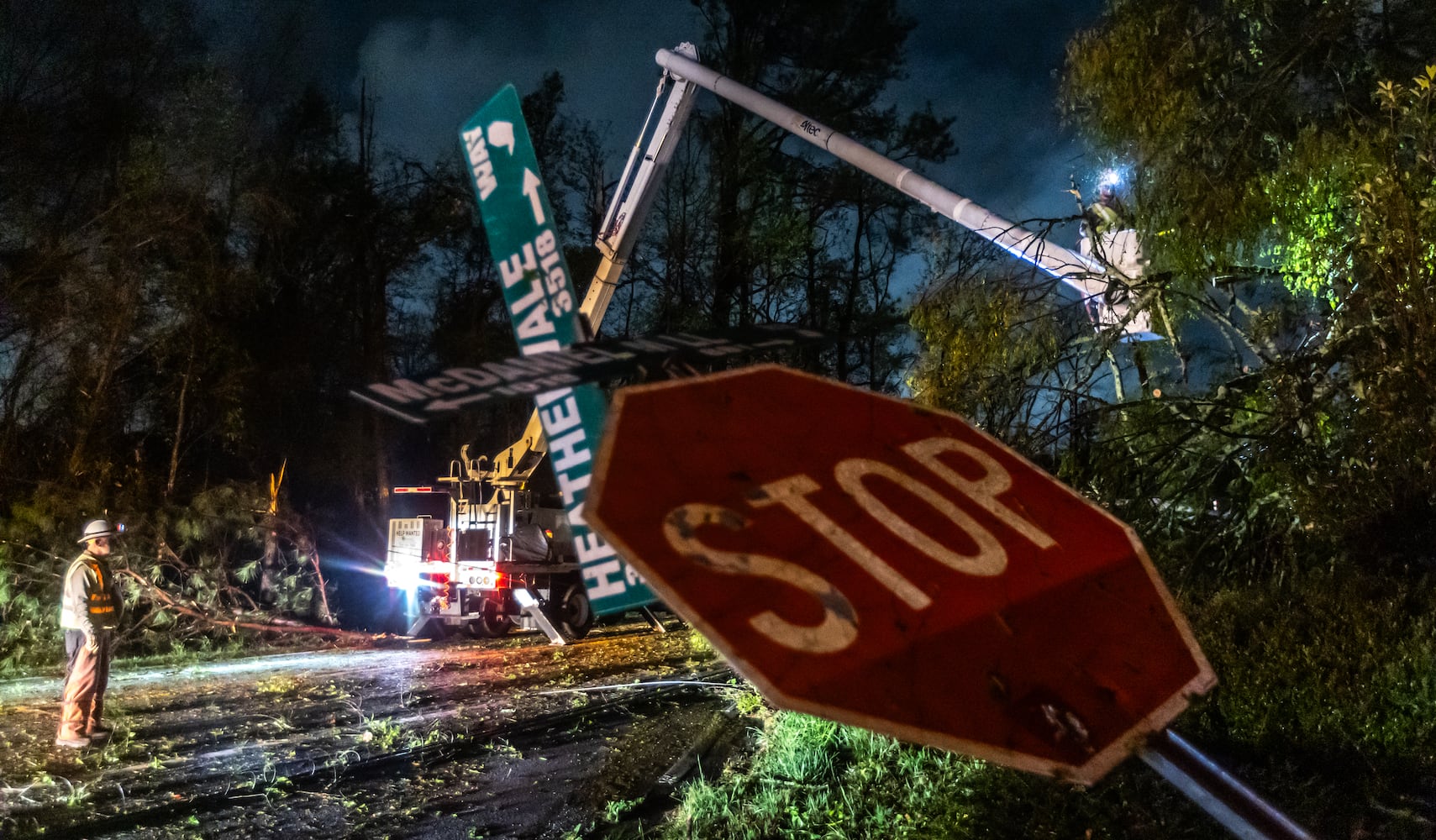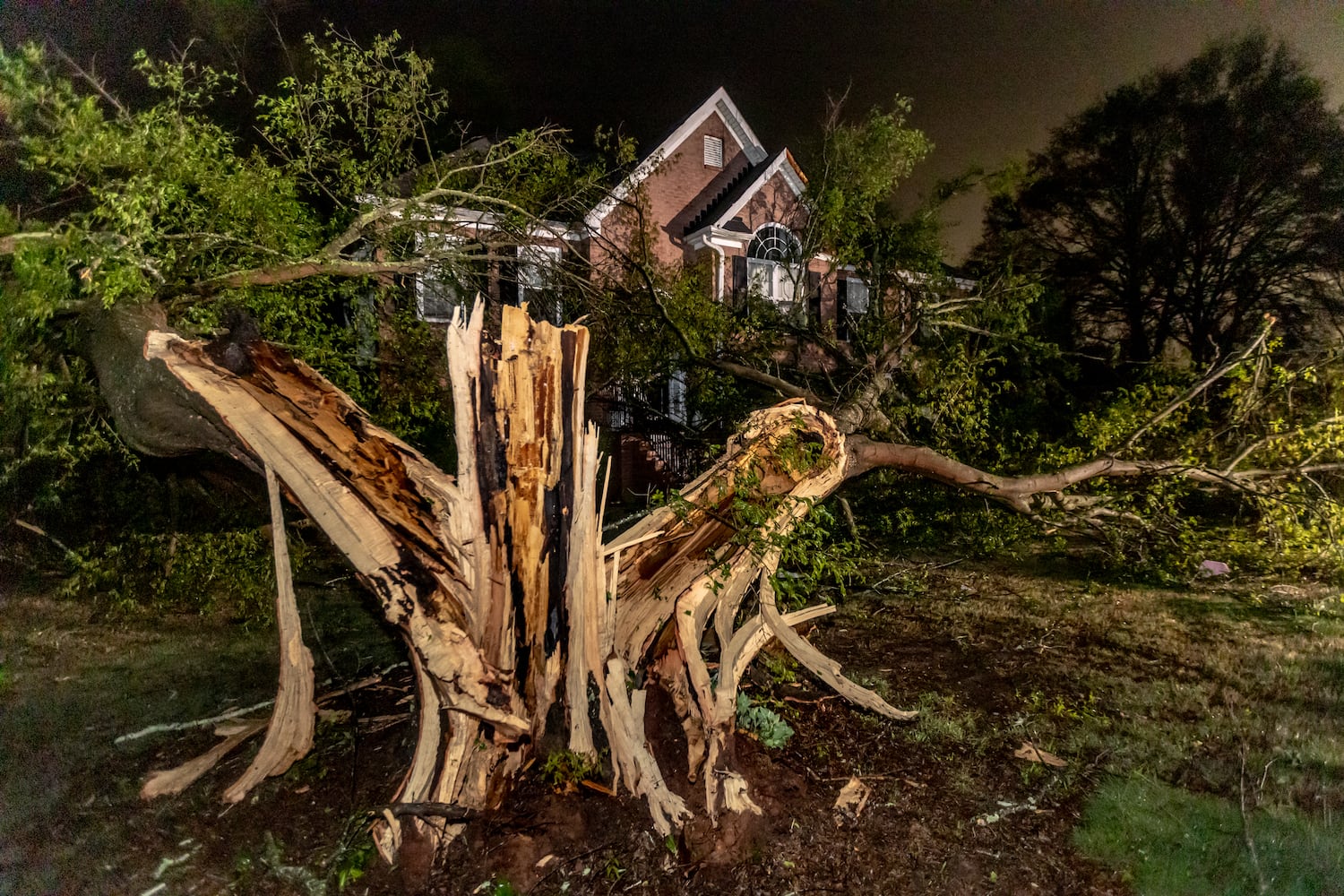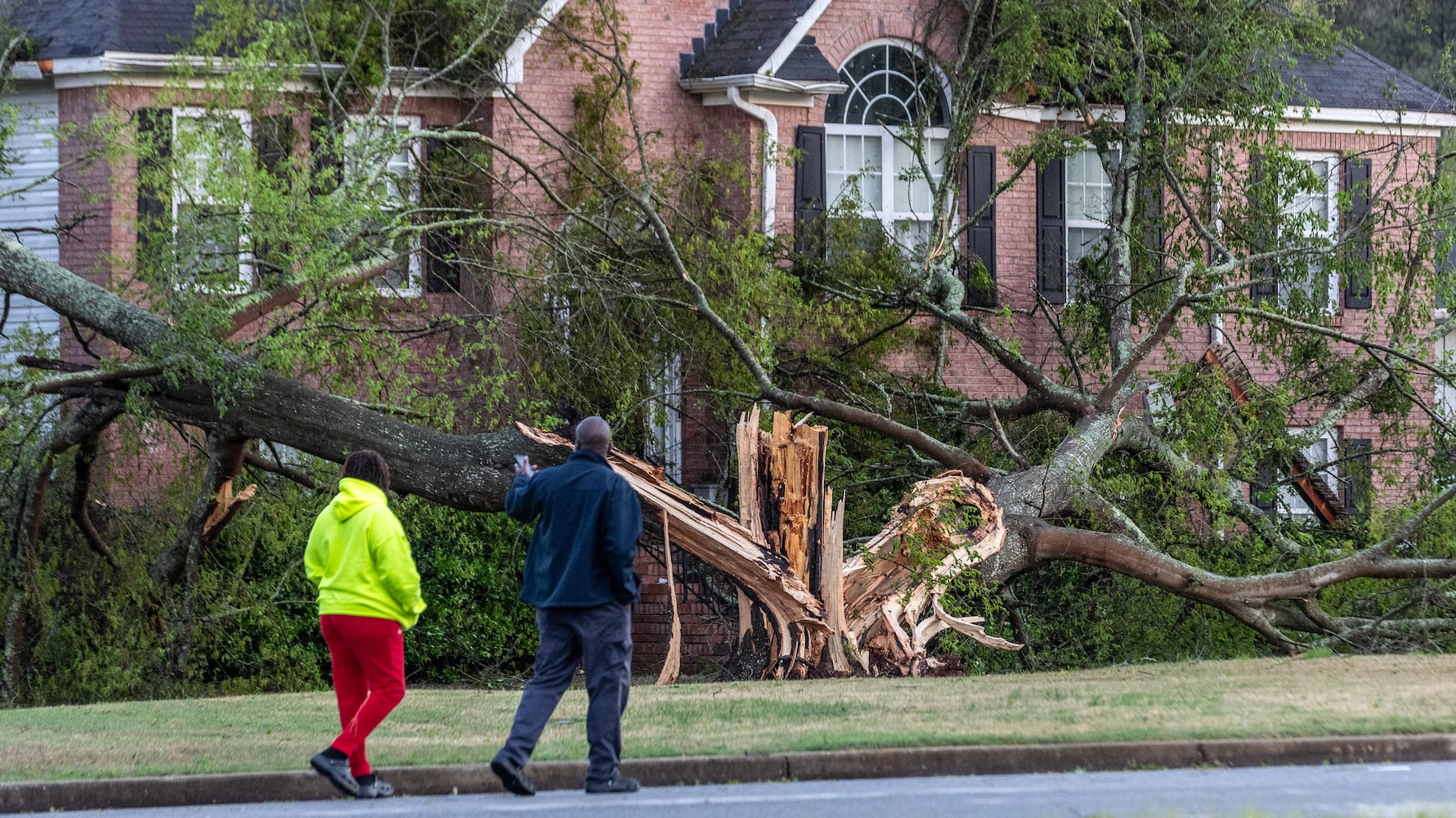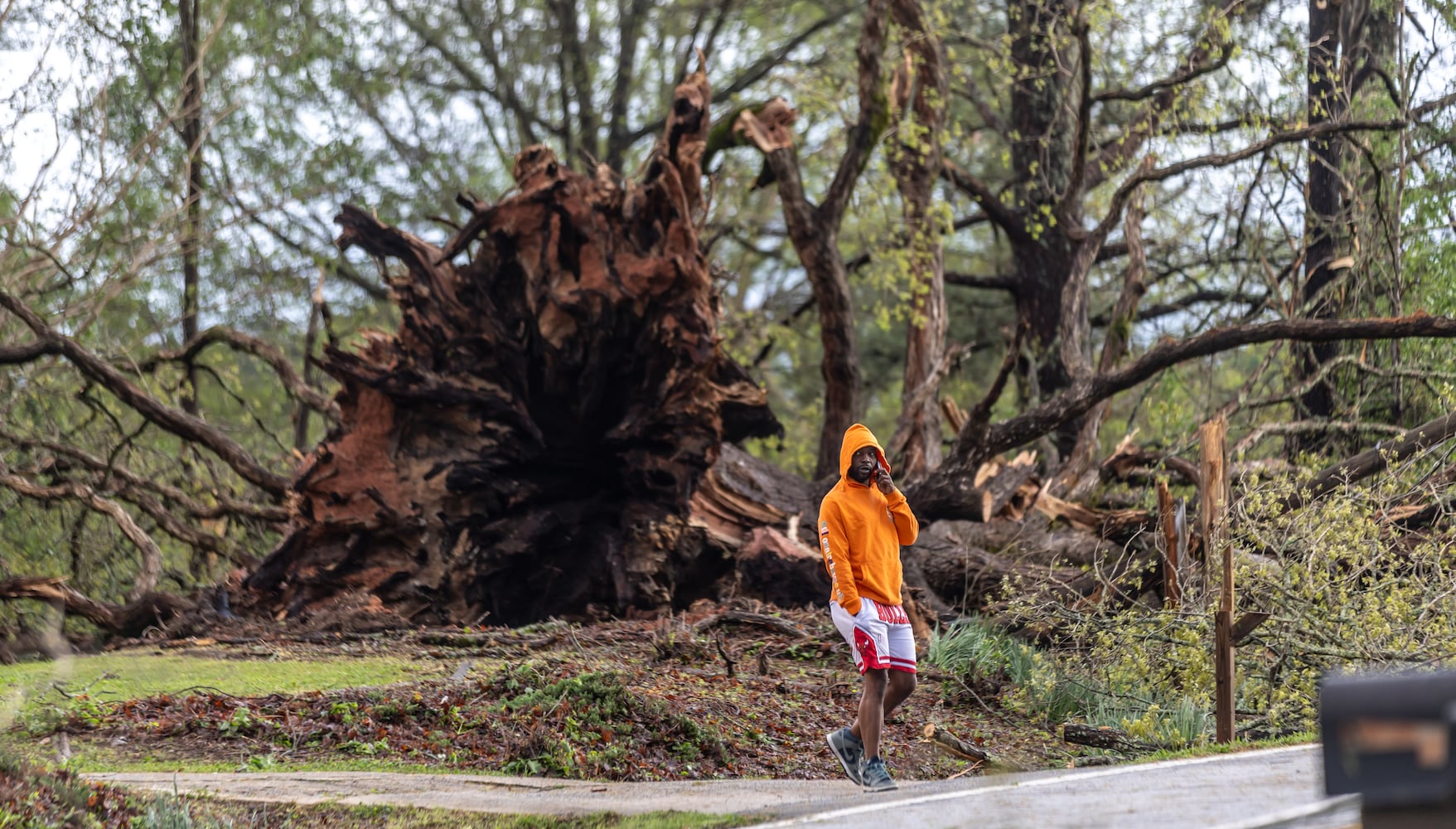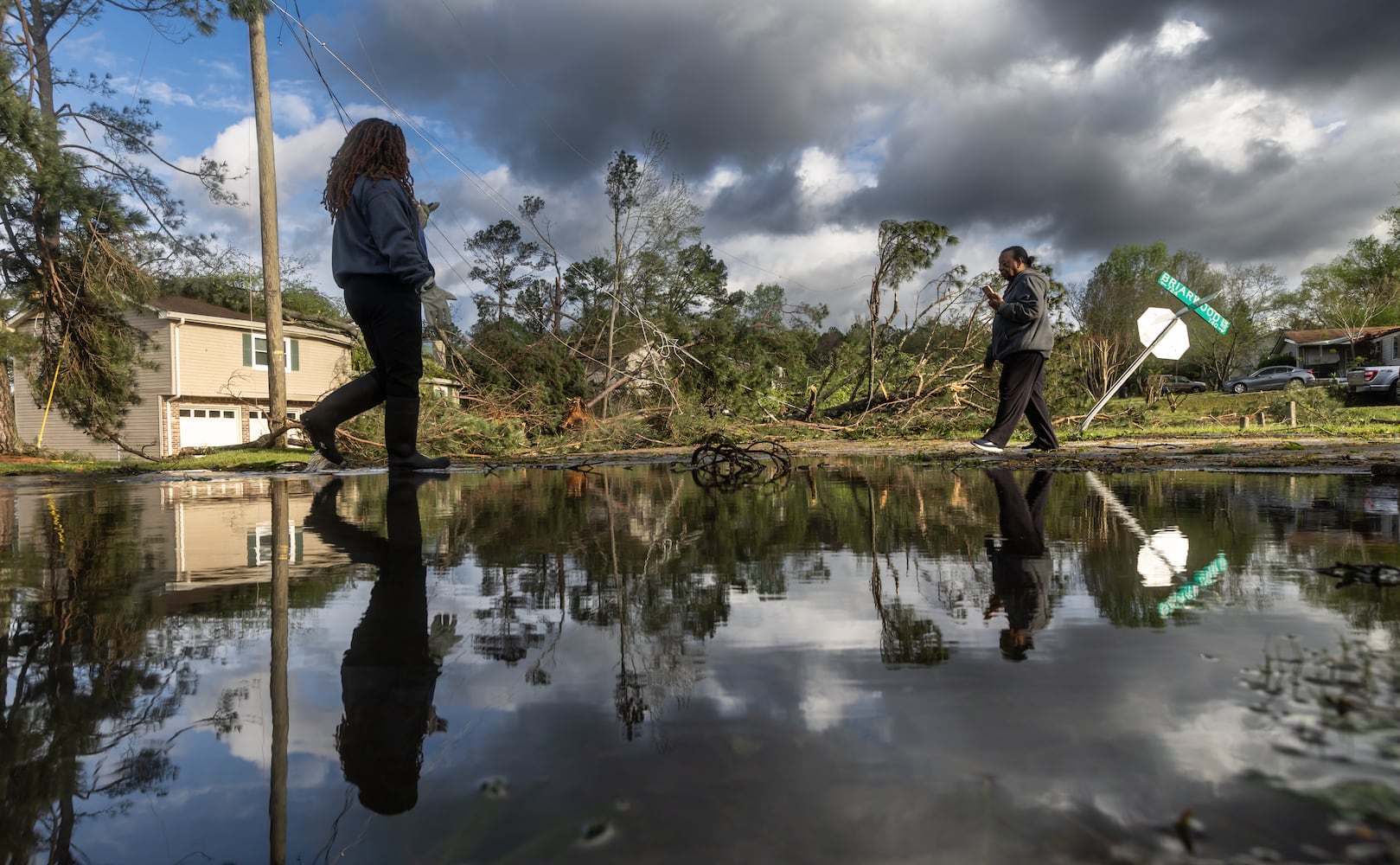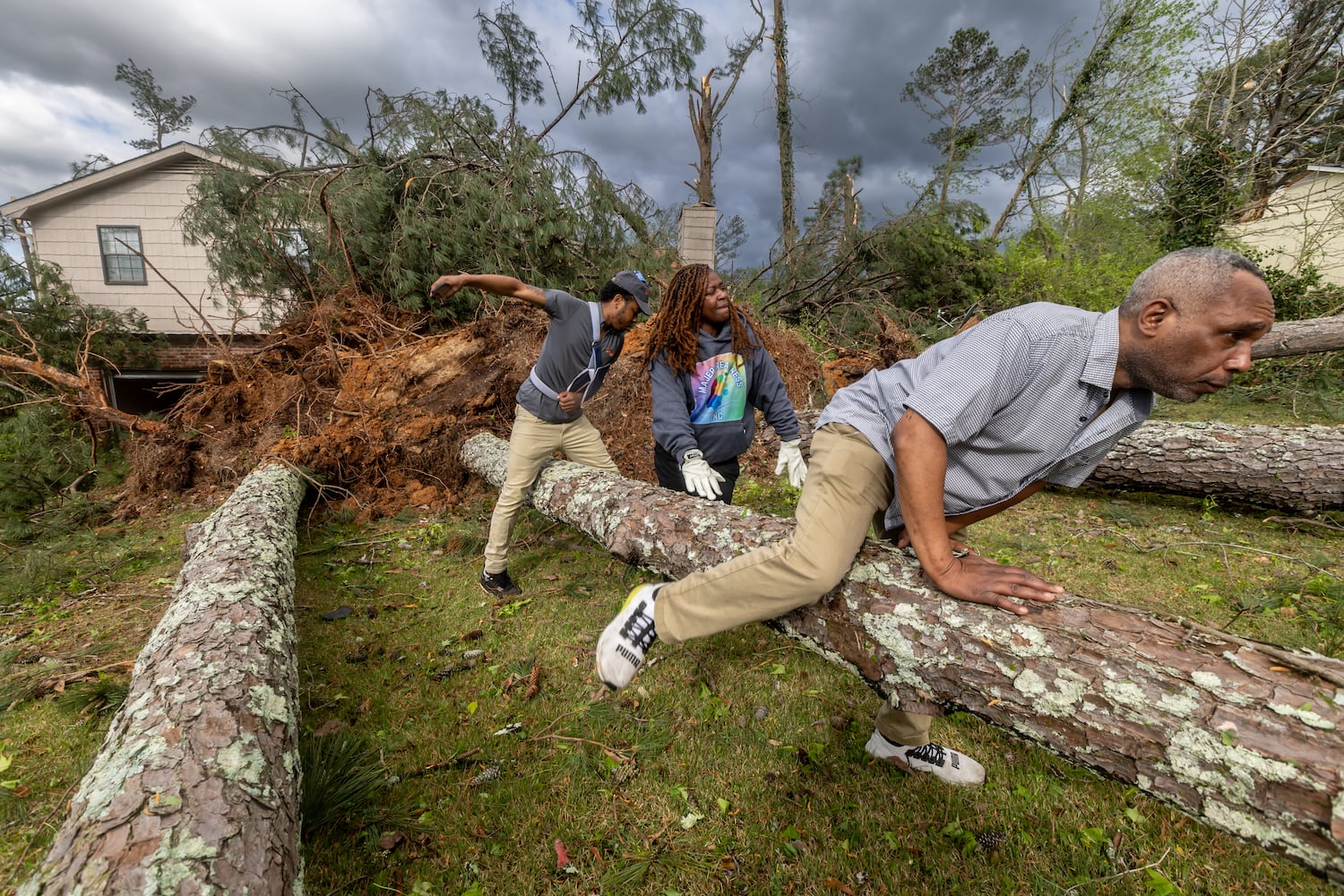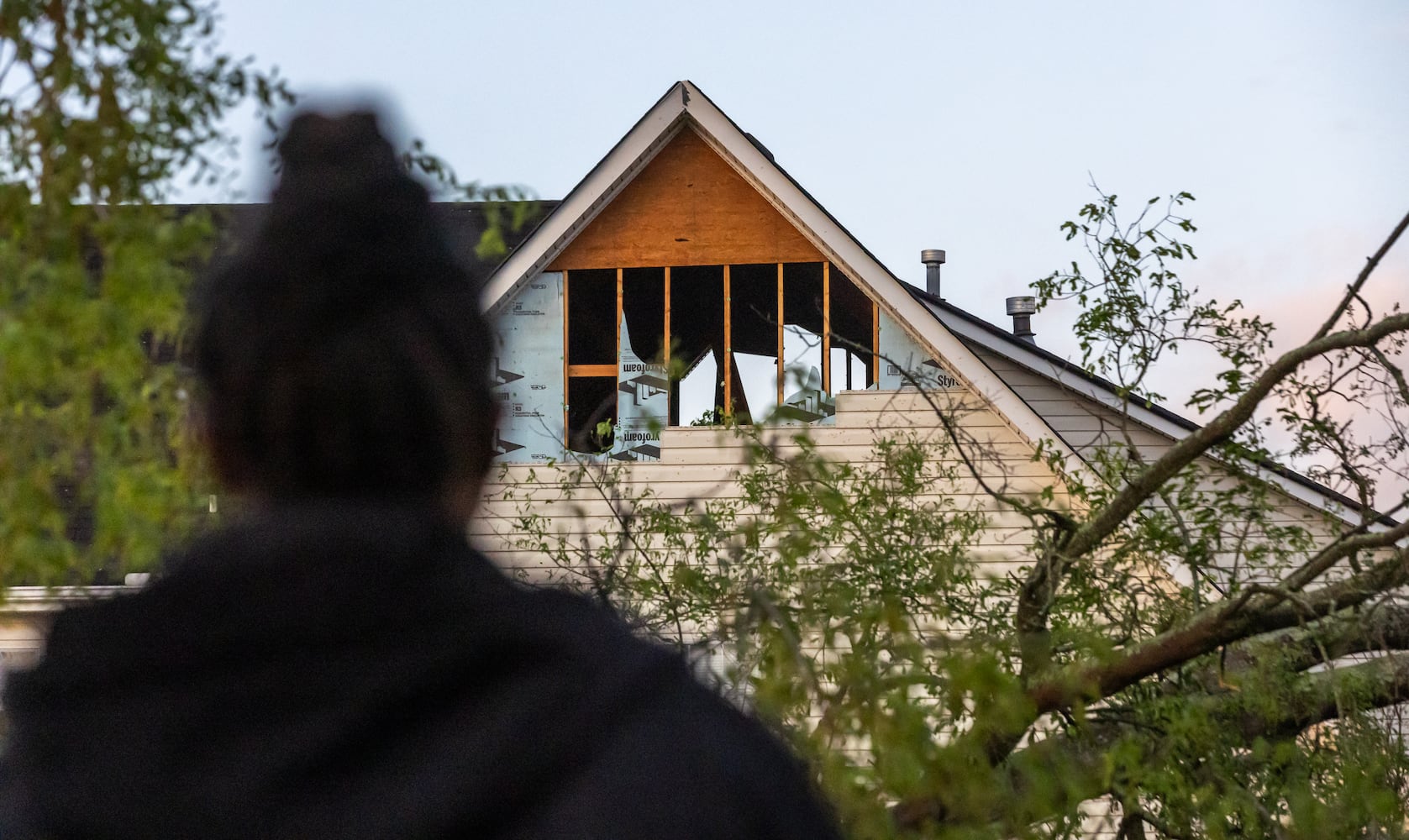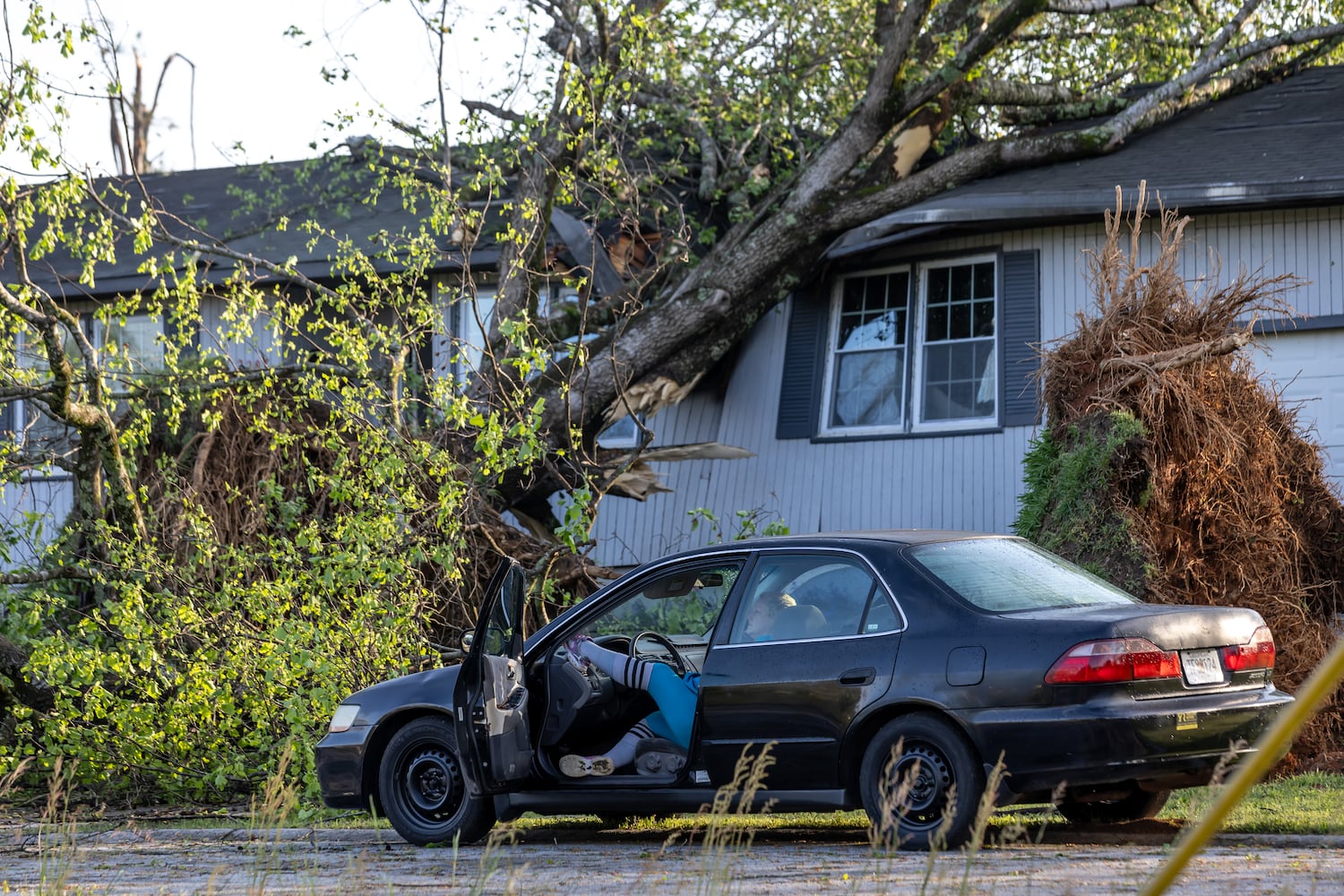Credit: AJC FILE
Credit: AJC FILE
Rockdale County residents continue cleaning up after a confirmed EF-2 tornado struck near Conyers.
“The National Weather Service confirmed Wednesday afternoon that the tornado, which touched down at around 11:54 p.m. Tuesday, had maximum winds of 115 mph,” according to reports from the AJC’s Rosana Hughes, John Spink and Jillian Price. Only two minor injuries were reported.
Georgia is now in the midst of tornado season, which peaks in March, April and May.
Midwest states are known for terrible twisters, but the nation’s fifth-deadliest tornado — the Gainesville tornado of 1936 — happened here. In three minutes, more than 200 people were killed and 1,600 injured after two estimated F4 tornadoes hit the north Georgia city on Monday, April 6. It is the second deadliest natural disaster in Georgia history after the 1893 Sea Islands hurricane, which has been estimated to have killed up to 2,000 people.
Credit: AJC Print Archives
Credit: AJC Print Archives
>> MORE DEJA NEWS: Check out what we’ve covered before (and again)
By April 7, the awful details were in the hands of Constitution readers.
“This queen city of north Georgia’s mountains was reduced to a shambles with 150 or more known dead, 1,000 to 1,200 injured and property damage which will run more than $5,000,000 counted as the toll of the worst cataclysm which ever visited the state,” L.A. Farrell wrote in the lead front page story, noting that the devastation was amplified by the fact that a pair of violent storms bore down on Gainesville at once.
“Lashing down upon the business district with a velocity of more than 120 miles an hour,” Farrell continued, “two death-dealing tornadoes struck at one time, laying waste a path two-and-a-half miles long and a half-mile wide through the very heart of the business section.”
The inability of rescuers to reach victims quickly added to the horror at the scene.
“Fire followed in the wake of the winds and rescue workers were kept off by searing flames as the fire departments of half a dozen neighboring cities fought in vain to keep down the damage,” Farrell told readers.
Credit: Georgia Historical Society
Credit: Georgia Historical Society
All of Gainesville felt the tornado’s wrath. But it dealt one business a particularly ghastly blow.
“Between 60 and 70 persons, mostly girls and young women, (were) known to have been buried alive and then burned to death in the Cooper Pants Factory, a downtown business establishment,” Farrell writes, adding that one man on the scene said “as far as he knew only three of the 121 employees escaped.”
Cooper Pants lost 70 workers to the storm.
In 2014, the Georgia Historical Society and the City of Gainesville erected a marker at the old Cooper Pants site honoring the victims of the ‘36 tornado. The marker also details how the city recovered, taking steps to bolster its infrastructure to better battle any future tornadoes or similar catastrophic events.
“Rebuilding of Gainesville focused on providing better paved streets and the construction of a new fire station, courthouse and city hall – forerunners of modern fire safety compliant structures,” the marker reads. “The tornado and Cooper Pants Factory fire also encouraged the adoption and enforcement of new building codes to minimize the risk of large-scale devastation.”
The 1936 tornado stunned the city, but Gainesville already knew how quickly spring’s most violent weather phenomenon could turn deadly.
On June 1, 1903, a tornado hit Gainesville’s southside, shearing two stories off the massive Gainesville Mills cotton factory. More than 100 people were killed, hundreds were injured and, at nearby New Holland, 200 houses were demolished. Many of those who died while working at Gainesville Mills were children.
“Gainesville is suffering,” the Constitution’s main story said, imploring readers to assist the north Georgia city in any way possible. “Atlanta’s generosity is again to be put to the test.”
Credit: AJC Print Archives
Credit: AJC Print Archives
INTERACTIVE MAP: Georgia tornadoes recorded since 1950
Click the map legend box to the left of the map title for access to more information. Check the box beside each decade listed to see tornado locations. Then click on a tornado icon shown on the map for further details. Currently, the map is set to show tornadoes recorded in 2020, but others can be toggled on/off via the map legend box.
ABOUT DEJA NEWS
In this series, we scour the AJC archives for the most interesting news from days gone by, show you the original front page and update the story.
If you have a story you’d like researched and featured in AJC Deja News, send an email with as much information as you know. Email: malbright@ajc.com. Use the subject line “AJC Deja News.”
About the Author
Keep Reading
The Latest
Featured
